Why is the movie called Under the Skin?
The title Under the Skin is a crucial clue to what’s happening in the movie. It gets at the idea of looking beneath the surface. At going beyond appearance. It’s similar to the popular idiom, “Don’t judge a book by its cover.” A book with a great cover could contain an underwhelming story. While a book with a bad cover could still be a narrative masterpiece.
Of course, there’s the pun-y nature of the title. As we come to realize that Scarlett Johansson’s unnamed character (whom we’ll refer to as “The Woman” throughout this article) is actually an alien wearing the skin of a human. So what’s “under the skin” is this alien creature. And the movie does build to the reveal of her true form—which looks like a store mannequin made of igneous rock.
But the real meat of the title doesn’t apply to The Woman at all. Rather than worry about what’s under her skin, you should think about humans from her perspective. She’s the alien on Earth, experiencing human civilization and culture for the first time. While she’s clearly been educated in conversation and driving and what have you, there’s still an innocence about her understanding of people. And a lot of what she’s confronted within the film is what’s happening “under the skin” of humans. What are their thoughts? Their emotions? What’s causing them to make the choices they make?
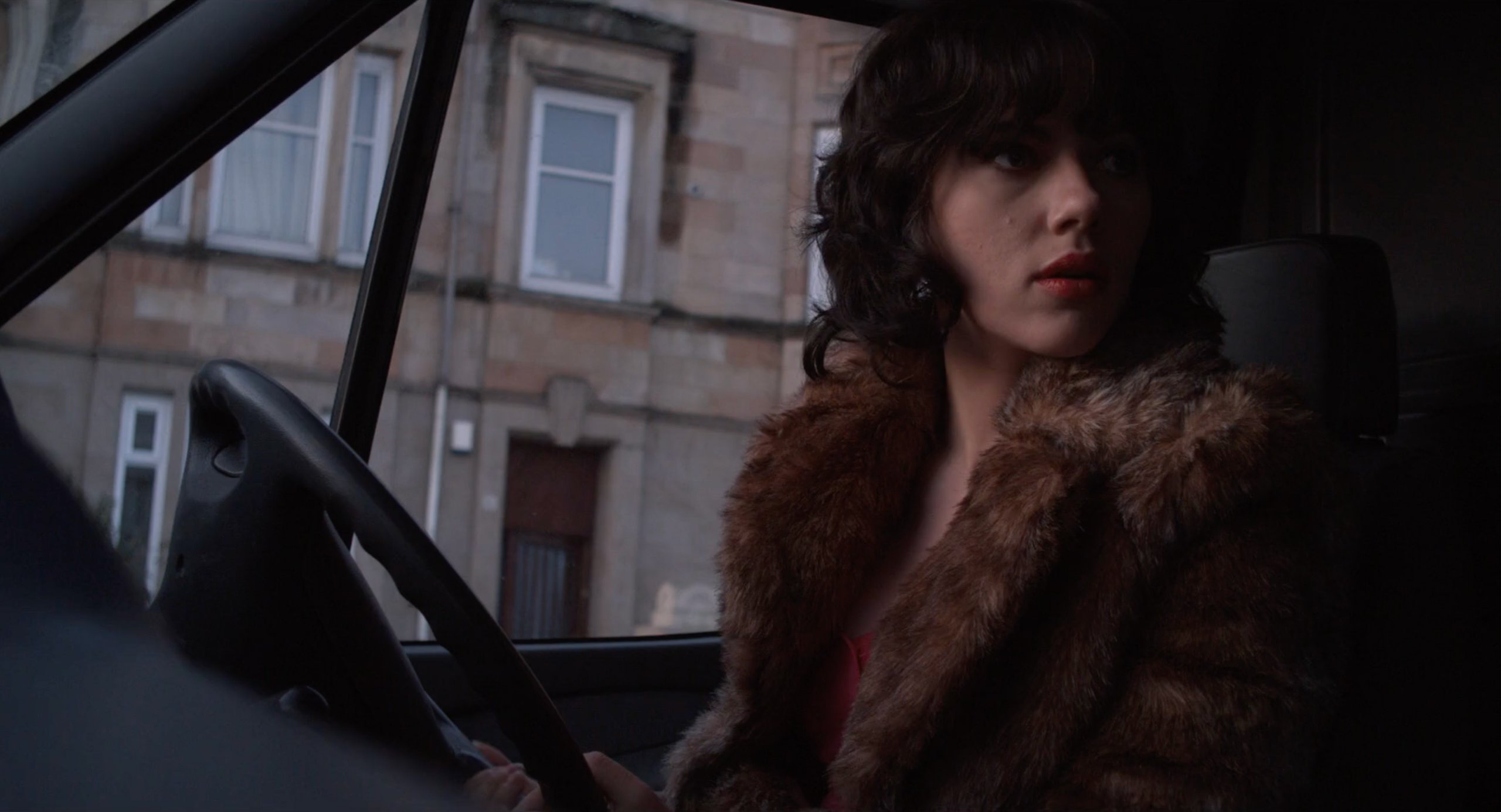
Under the Skin makes a lot of sense when you realize the first hour of the movie is The Woman coming to understand that humans are pretty wonderful. In little ways, the director, Jonathan Glazer, shows us the positivity of people. The joy and camaraderie of them coming out of a football game. Women applying makeup to other women in the mall. All the happy people in the mall. The way the wife at the beach tries to save her dog from a riptide. The way the husband tries to save the wife from the riptide. The way the stranger tries to save the husband from the riptide. The men she picks up are cheerful and complimentary. When she trips and falls in the street, people help her and check on her.
None of that stuff is necessarily highlighted in an obvious way that draws attention to it. While you watch, you might think it’s a lot of nothing. That it’s an artsy movie lingering on random things and taking its time because that’s what artsy movies do. Which is fair. But, really, what Glazer’s doing is showing rather than telling. You don’t have a random character give a big speech about how flawed yet wonderful people are and that the aliens should consider them as more than meat bags they can feed on, that their true value is what’s “under the skin.” Instead, Glazer gives us enough scenes of people being kind to The Woman that we get the point (hopefully) without the need for exposition.
This sets up the final encounter with the logger. Narratively, the logger is awful. Thematically, he’s fascinating. Why? Because there’s a duality to the character. Obviously, he works as a contrast to the decent people we’d seen throughout Under the Skin. All these nice, normal, everyday people who are, on average, quite kind. This guy, though, is a monster. The first one who truly takes advantage of The Woman. But in that way he’s the closest person to The Woman. She was a predator, luring in lonely, vulnerable men. And the logger is the same: a predator who takes advantage of someone who is lonely and vulnerable. In a weird way, this awful character is the bridge between the aliens and the humans.
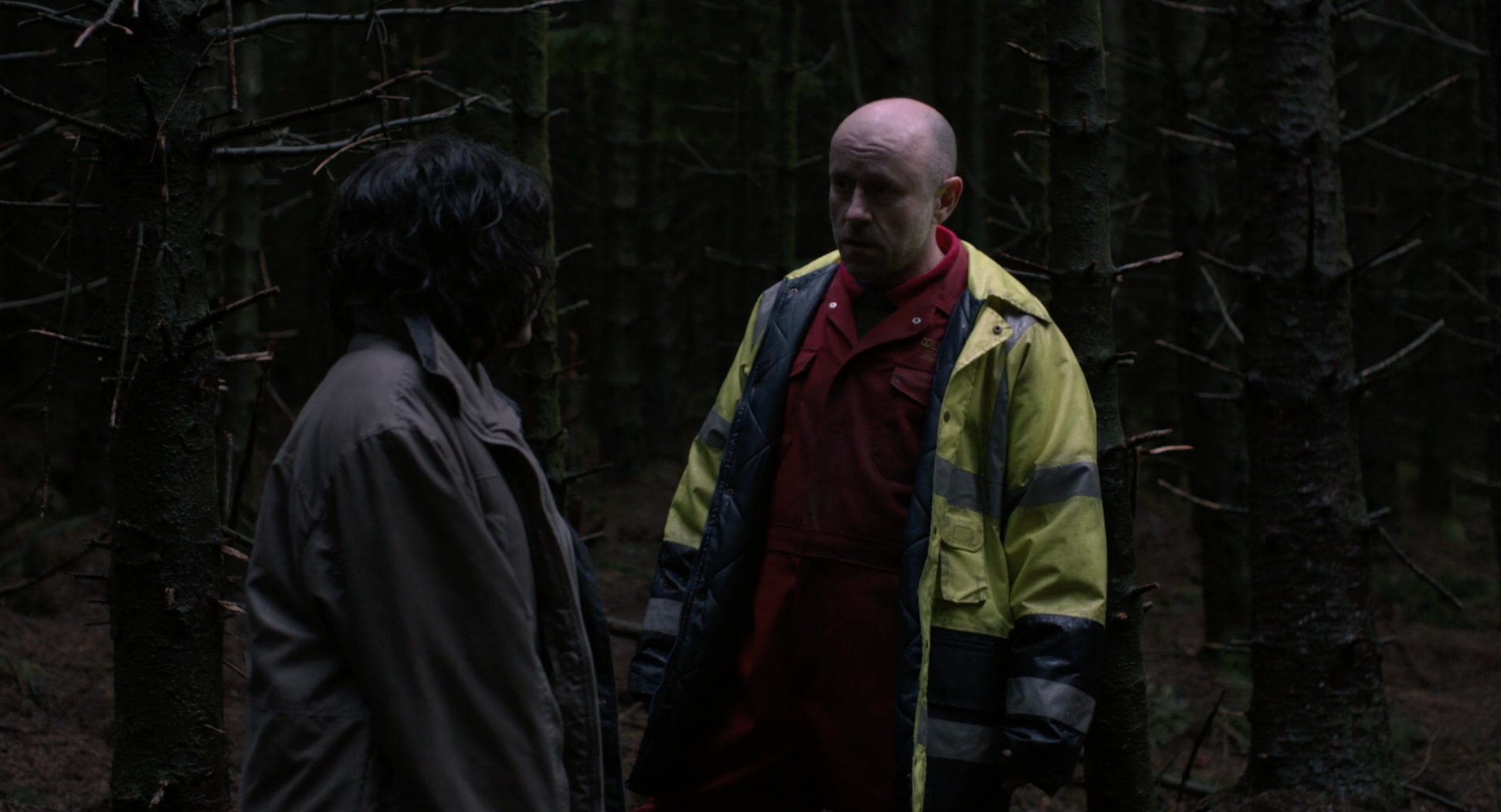
This recalls the scene where the kids attack The Woman’s van as well. As The Woman waits in her van for someone to prey upon, a young man approaches the window of her van. Once she cracks the window, other boys appear and attempt to break into the van. It’s pretty terrifying. Except The Woman is an alien and doesn’t care. She just drives away.
This is another scene that can seem out of place by itself. Its purpose is to not only foreshadow the logger but contrast The Woman’s reaction to each situation. It also reminds me that despite the decency on display so far, there’s still ugliness. It’s just The Woman had been able to avoid becoming the victim of it.
Regarding the logger, think about the difference in The Woman’s reactions. Her calm driving away vs breathlessly fleeing through the woods. When the boys attack, she still identifies as more alien than human and responds with her alien coolness. But when the logger attacks, she responds with a human’s terror. So you have The Woman who shows these murderous aliens can actually be emotionally complex and caring like humans. While you have the logger who shows humans can be as cold-blooded as the aliens.
And that comes back to the title. Does the skin matter? Or is it what’s under the skin? Both aliens and humans are capable of empathy and cruelty. One isn’t more special or evolved than the other.
Which can make you think about the people around you. Just because someone’s different from you doesn’t mean you aren’t the same under the skin. People from all over the world can be good and bad. And odds are you’ll meet more good ones than bad ones. Don’t judge a book by it’s cover.
How does the book differ from the movie?

While Glazer’s stylistic choices seemingly separate the film from the source material by author Michael Faber, the meat of the book’s plot is indeed present in the adaptation. So, it’s worth giving a broad overview of the book.
Basically, the novel opens on the main protagonist, Isserley. This is The Woman’s character in the film—except in the movie, The Woman isn’t given a name (more on that later). Isserley is an alien who has been altered to look like a human. This new skin causes her quite a bit of pain (the aliens give huge breasts so she can be attractive to men they’re trying to capture, but she still performs her job dutifully.
Her job? To hunt for humans in the Scottish Highlands. To her alien race, the meat of humans—which are known to these aliens as “vodsel”—is a delicacy. In particular, she hunts for well-muscled men and brings them back to a meat-processing farm for consumption. In order to determine a man’s…uh, eatability? She spends time with each man in her car. And if the man is desirable, she injects them with a drug and takes them back to the farm.
Isserley starts to have reservations about her job after meeting an alien named Amlis, who saw it as cruel to eat humans. Not only does she start to agree with Amlis about the alien race’s treatment of humans, but she’s attracted to Amlis because he is interested in her—a far cry from the alien elite who simply want to use her figure to attract men to the meat farm.
While driving, Isserley is unwillingly stopped by a hitchhiker, whose pregnant wife is giving birth. The man needs a ride to the hospital where his wife is going through labor. During the trip, the man discusses death, and how he believes that when we die we come back to exist on Earth in some other form.
It’s in that moment that Isserley’s car malfunctions and she crashes into a tree. The man is ejected from the window, but remains alive. Isserley then wonders what will happen to her body, as she must activate an explosive that will destroy both her and all evidence of the car crash. She believes her atoms and particles will disperse into the environment and air. She then hits the switch.
As you can see, very few of the book’s details are part of the finished film. But still, the book’s plot informs the movie. Glazer and screenwriter Walter Campbell simply strips away the novel’s needless plot specifics and instead focuses on Isserley’s mission.
The major difference, however, is the ending. In the book, Isserley comes to empathize with the man who is trying to get his wife to the hospital. Isserley observes their stressful situation and their desire to grow a family, and is moved by the man’s belief that there’s more to life than our physical beings. She is conflicted about whether or not to kill the man right before she crashes.
In the film, The Woman has already decided that she no longer wants to hunt for men. After connecting with the disfigured man—who becomes the movie’s equivalent of Amlis from the book—she abandons her fur jacket (which had become a symbol of her hunting prowess) and decides to run from the Motorcycle Man who has been ensuring that she carries out her job duties.
This interesting twist provides some insight into why Glazer felt it necessary to diverge from the book’s plot. Seemingly, Faber’s novel ends ambiguously. Isserley is experiencing a moment of conflict in the car about killing the man when she accidentally crashes. Thus, her life ends at a crossroads: does she or does she not want to continue killing these men for the sake of her alien race?
But Glazer doesn’t end with a crossroads, and instead actively chooses the righteous path for Scarlett when he allows her to let the disfigured man go. After that, The Woman deviates from Isserley and owns a completely different character trajectory as she runs away from her monitor (the Motorcycle Man).
The structure of Under the Skin
- The Woman is built and arrives on Earth, specifically in Glasgow, Scotland.
- This entails her going to the mall and getting clothes and makeup and other things she’ll need to lure men.
- The Woman starts her job of hunting lonely men that the aliens can then process for resources.
- Picks up the first young man who works for himself.
- Picks up the football fan with the scarf
- Picks up the guy from the beach
- Picks up the guy from the club
- Picks up the guy who loves her eyes
- Gets inspected by Motorcycle Man
- Spends the day wandering around Glasgow, surrounded by people
- Flees a group of young men who attack her van
- Picks up disfigured man
- The Woman has a change of heart
- Stares at herself in the mirror
- Saves the disfigured man
- Runs away
- The Woman tries to live like a human
- Goes to a restaurant and tries chocolate cake
- Accepts the kindness of the man on the bus
- Enjoys going on a date and trying to make love with someone
- The Woman is reminded she’s not a human
- Sex fails because her genintals are for show and not functional
- Flees from human civilization
- The Woman encounters a person who is like her, a predator
- In the woods, she meets the logger
- The logger plays nice then attempts to assault her
- Realizing The Woman’s not human, the logger sets her on fire
What happens in the opening scene?
Rarely does a movie seem so confusing right out of the gate—but Under the Skin is no ordinary movie. Its plot is very deliberate and cryptic, as you can see in the film’s opening sequence of shots.

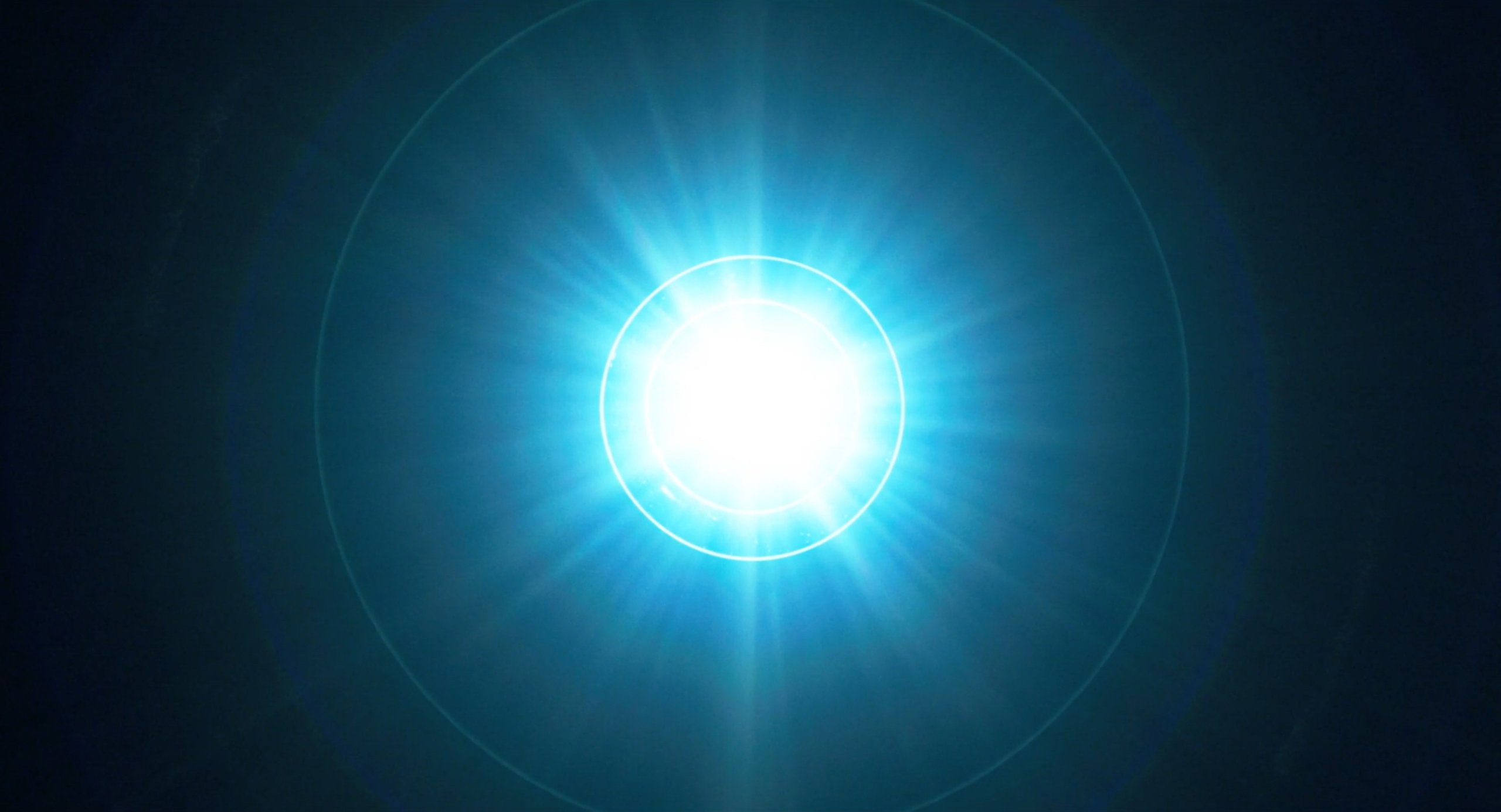
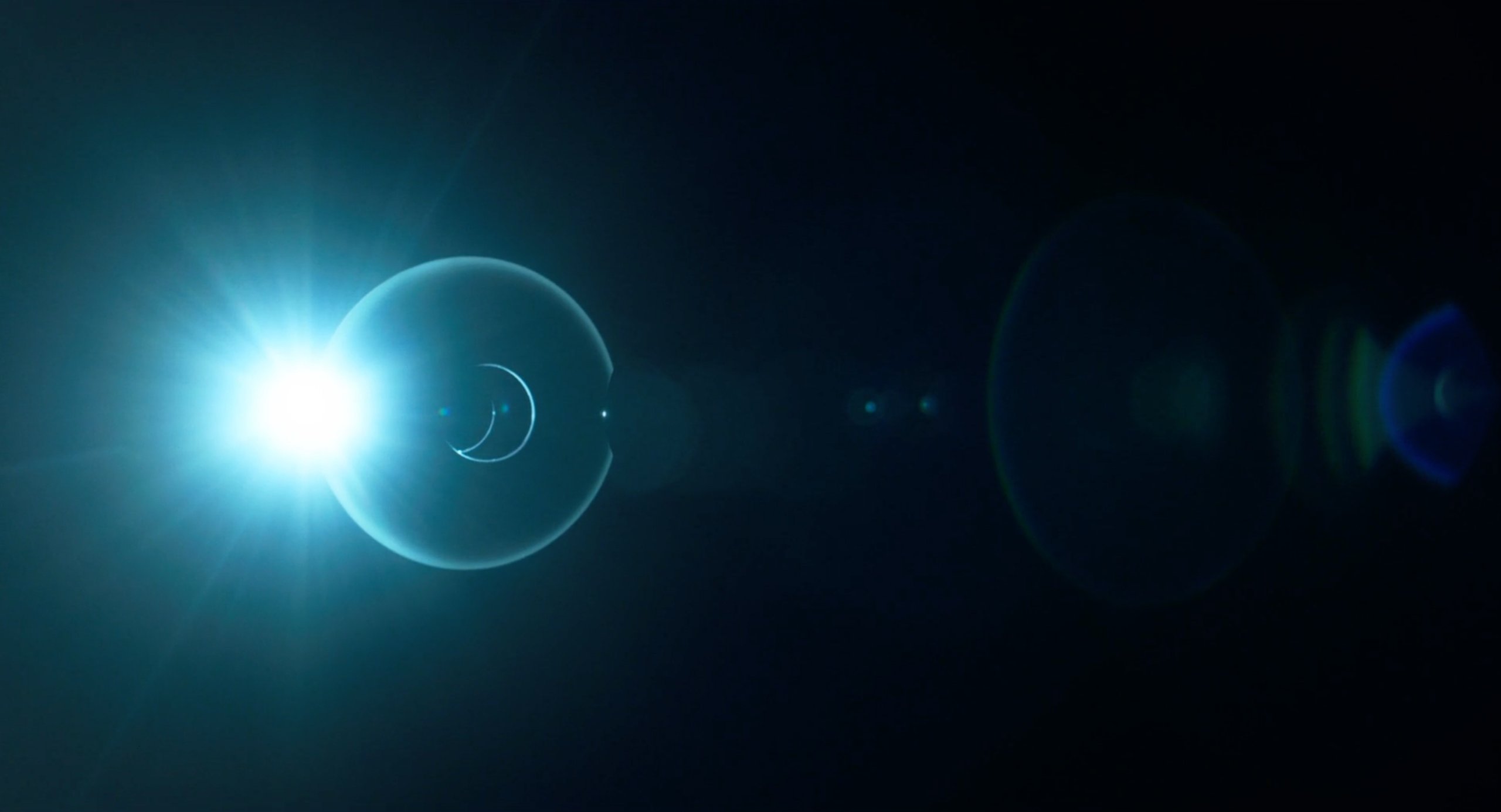

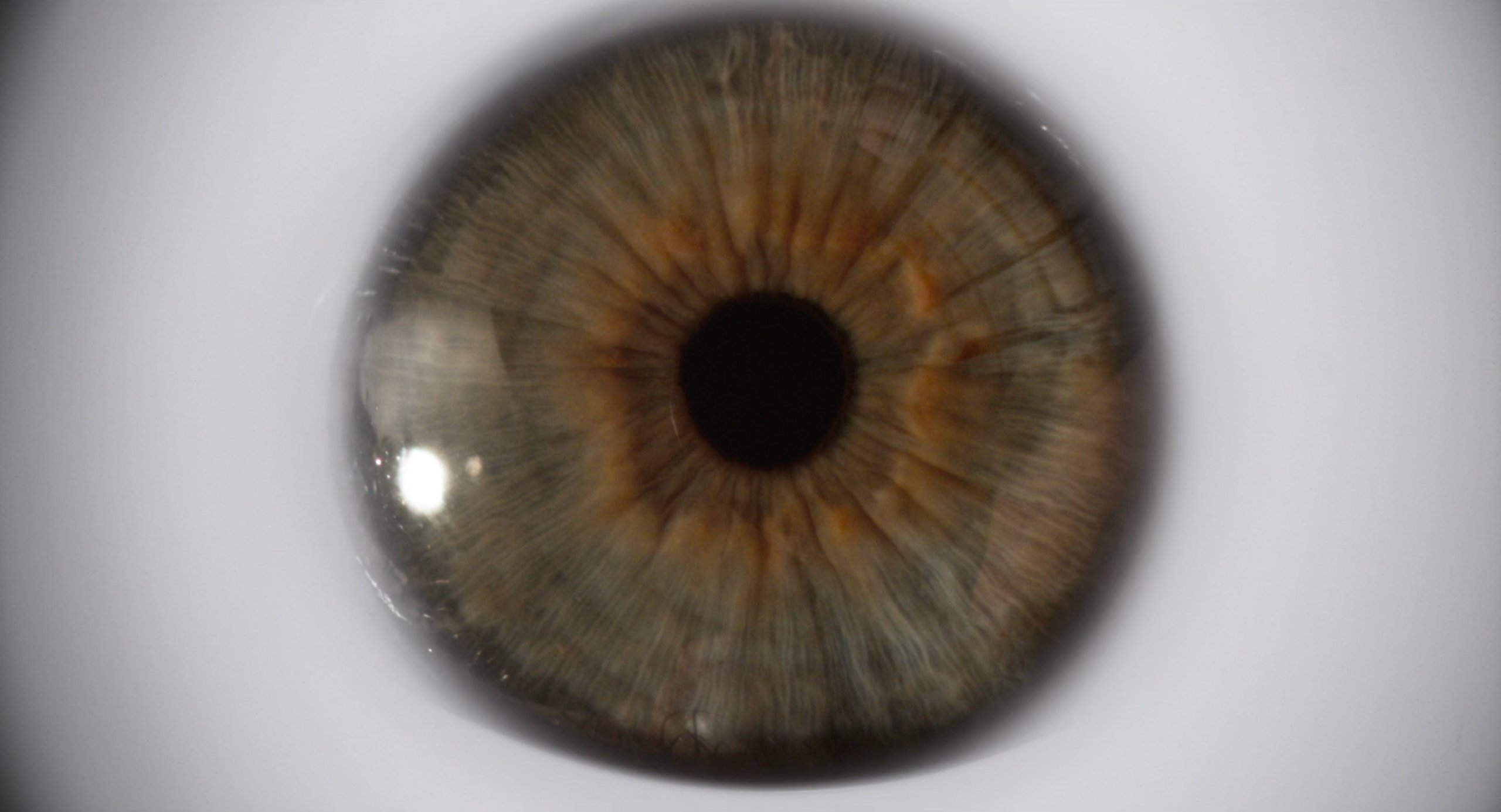
The movie starts with a faint glowing light in the distance. The light grows brighter, and brighter, and brighter—until a blinding blue fills the screen.
We then see what seems like an eyeball forming. The pupil of the eye—which appears to be the last piece before completion—slowly floats towards the rest of the eye.
When the pupil connects, we shift from the animated light fixtures to what looks like a camera lens. The lens then transforms to an actual eyeball.
And that’s when we see the title of the film: Under the Skin.
That timing is no coincidence. The entire opening shot showed us what exists underneath the skin of The Woman. As we see by the end of the movie, the alien body that exists underneath The Woman’s skin is covered in black. The aliens don’t have eyeballs, so the camera lens is just part of the alien race’s design of the human body.
This is interesting because it immediately signals that The Woman has no agency over herself. She is nothing but a vessel—a product designed by her race to infiltrate humans. In that light, we can view this moment as her birth on Earth.
If that’s the case, then the rest of the movie seems much less cryptic, right? Because then Under the Skin essentially becomes nothing more than a coming-of-age story.
Who is the dead woman at the beginning of the movie?
We see the Motorcycle Man pick up a girl from the side of the road, deposit her in a van, and bring her to the white room. There, The Woman unclothes this girl.
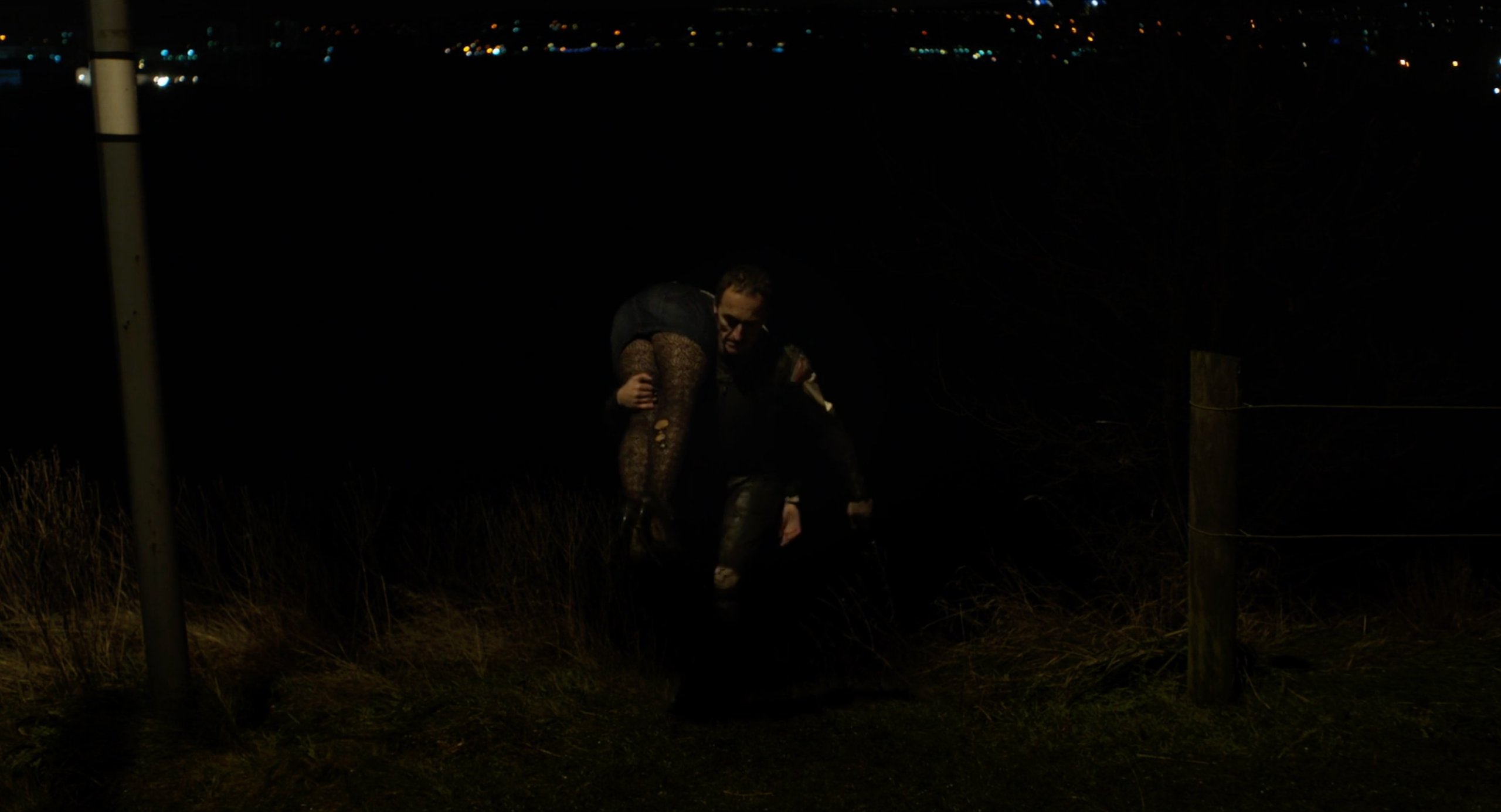
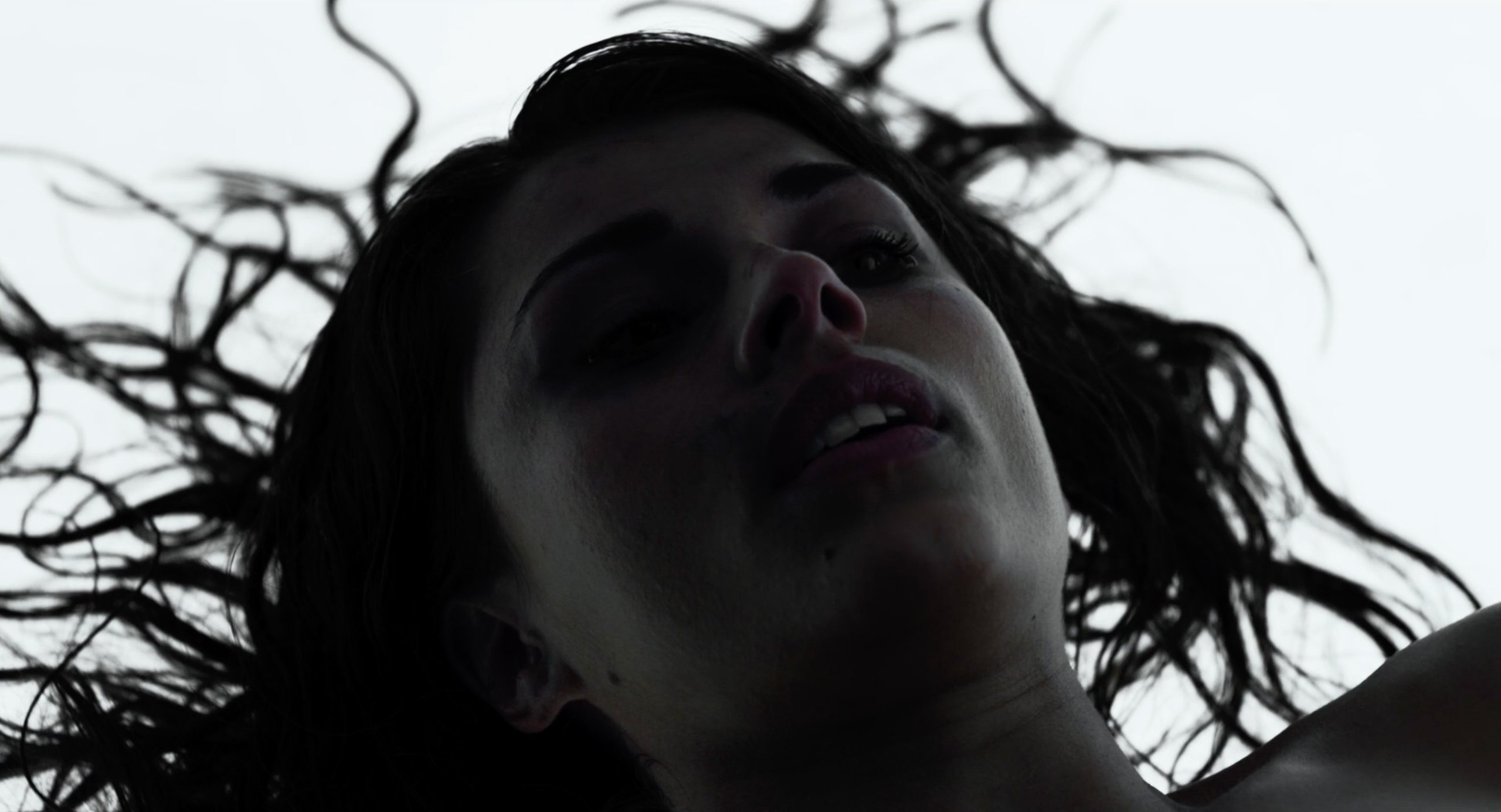
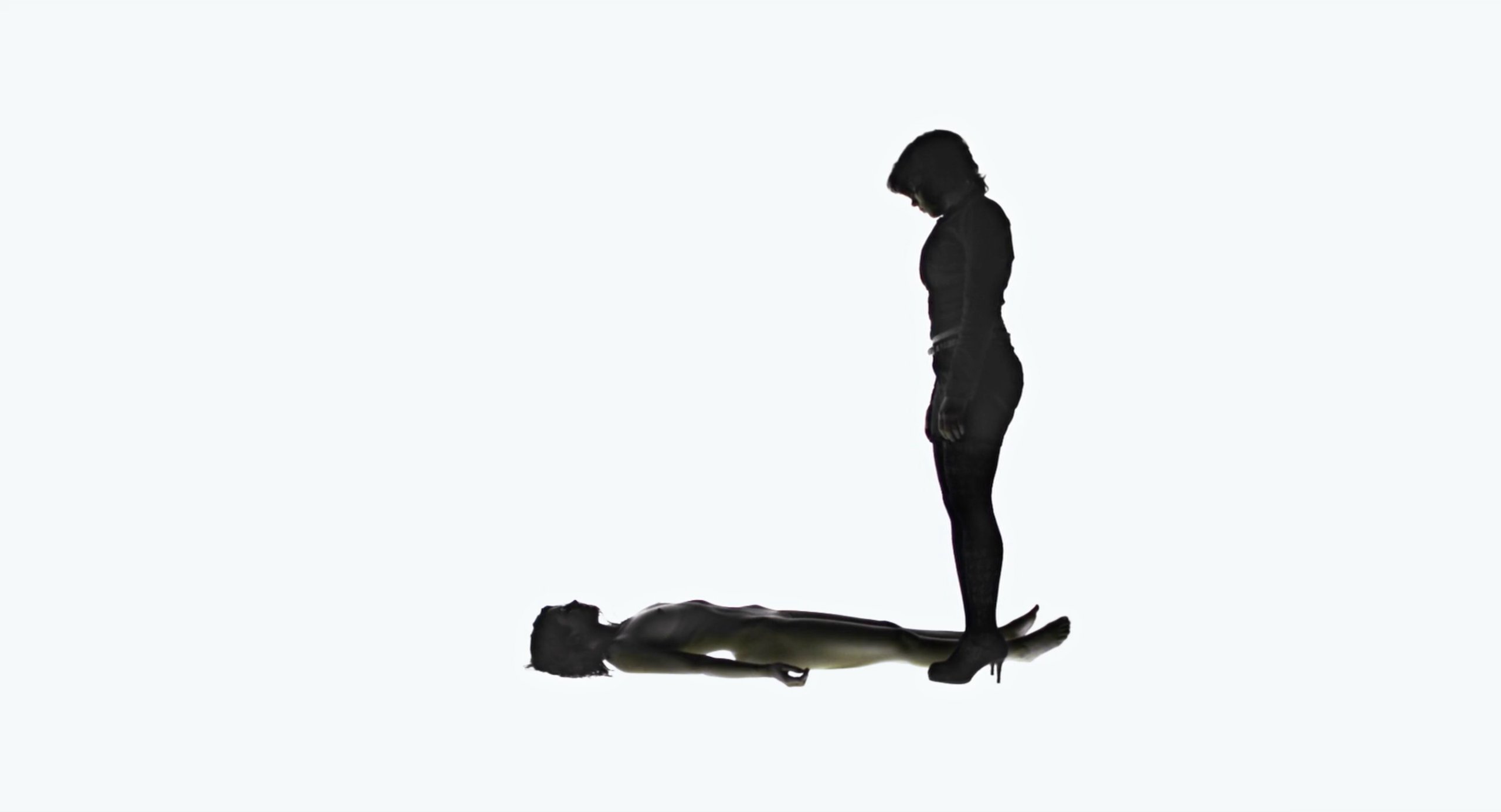
This is either a random human that the Motorcycle Man has captured. Or, it’s The Woman’s predecessor.
Three minor details would point to the predecessor theory.
First, the two women look alike. Same hair color. Similar features (Scarlett is able to fit into the dead woman’s clothing). Later in the movie, we see there are multiple Motorcycle Men who all dress alike and ride the same kind of bike. They aren’t 100% identical, but close enough. The aliens could have a similar process for their “hunters.” Dark-haired Scarlett Johannson types.
Second, the girl doesn’t respond the entire time we see her. From the Motorcycle Man carrying her to The Woman undressing her. It’s like they’re moving a doll. Except for this brief moment when we see tears fall out of her eyes. It’s possible the aliens simply have a means of paralyzing this random human, and being in this situation would make her cry. But it feels more thematically relevant if this girl was like The Woman—another hunter who developed empathy. Except she was less successful in her attempts to run away. The Motorcycle Man found her, deactivated her body, and brought her in for the transition. Except she’s still mentally aware of what’s happening, which makes the situation, in hindsight, quite heartbreaking. It also foreshadows the eventual emotional awakening that The Woman will have.
Thirdly, we have the van. The same white van The Woman drives around is the van we see parked on the side of the road where the Motorcycle Man finds the girl. If the girl was a human, it’s not quite the vehicle you would expect her to have. But it’s possible, and that the Motorcycle Man simply seized the opportunity and passed the van on to The Woman. I think it makes more sense that the van already belonged to the aliens and was what they gave to all their hunters. So the fact we see it on the side of the road would confirm the girl was The Woman’s predecessor.
This also brings a nice circularity to Under the Skin. As the movie would open with the Motorcycle Man looking for a runaway hunter and it ends with him looking for a runaway hunter.
What is the significance of the ant?
The ant appears on The Woman’s hand after she undresses the dead woman.
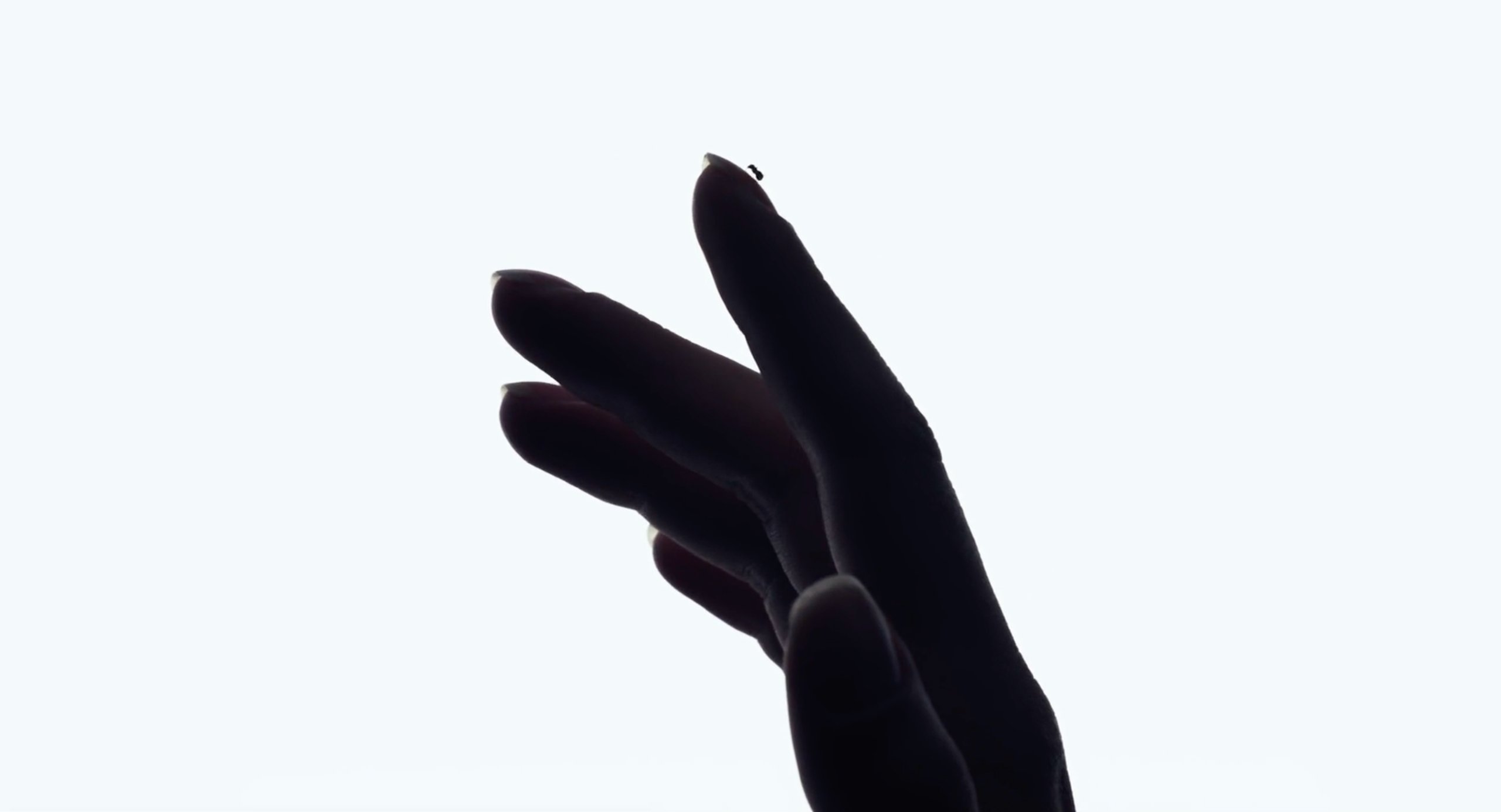
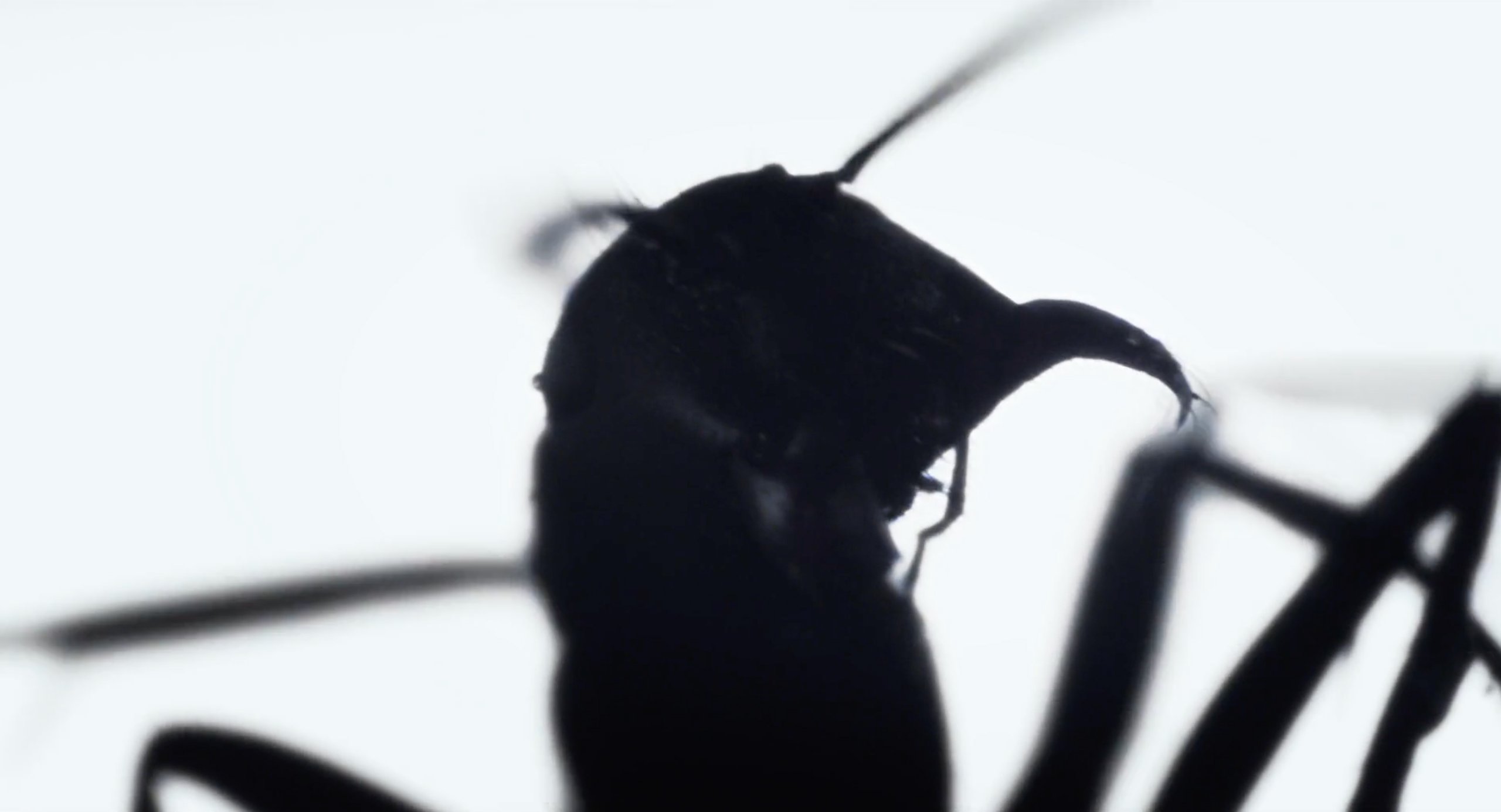
Narratively, the ant doesn’t do much. Which means the inclusion of the ant is either completely pointless or thematic.
If it’s thematic that means we should take a step back and think about what an ant represents. They’re insects that live in colonies. We humans tend to think of ants as a mindless collective rather than as individual entities that have personalities and a complex inner world. Because of that view, we tend to think of an individual ant as having no inherent worth. Especially since one ant seems to be completely indistinguishable from another. Which is what I think Glazer wanted us to consider.
Initially, The Woman could be seen as something similar to an ant. A worker who is completely disposable and supposed to be without personality. These Motorcycle Men and hunting women the aliens put on Earth are just ants going about their tasks.
It could also apply to how the aliens see humans. They view humans as something beneath them. That no individual human has inherent worth outside of being a resource for the aliens to process.
For both The Woman and humans, there’s clearly more going on under the skin. The Woman isn’t another brainless ant and neither are the people she meets along the way.
So the ant becomes a symbol of what individuals aren’t. They’re not mindless drones devoid of emotions. I don’t think Glazer wants us to think that ants themselves may have more going on than we think (which could be true). But he wants us to consider how often we tend to view other living things the way we do ants, stripping them of their individuality and capacity for emotion. Whether that’s other humans or dogs, cats, horses, deer, birds, etc. There’s more to living things than what we consider. A point that’s only made stronger by our main character being an alien.
All of this is reinforced at the film’s turning point, after The Woman has started to process the disfigured man. She stares at herself in the mirror, while, nearby, a fly buzzes against glass, trying to escape the interior and flee into the exterior. Flies are similar to ants in how people tend to think of them as inherently valueless and without personality. Is that fair? Or are we being careless due to a sense of superiority? Is there not something human in a fly’s yearning for the outside?
It’s after The Woman considers herself and the fly that she, for the first time, saves a life.
Who is the Motorcycle Man?
The Motorcycle Man seems to be in charge of The Woman. We see him bring her resources, inspect her, clean up loose ends regarding her victims, and seek her out when she runs away.
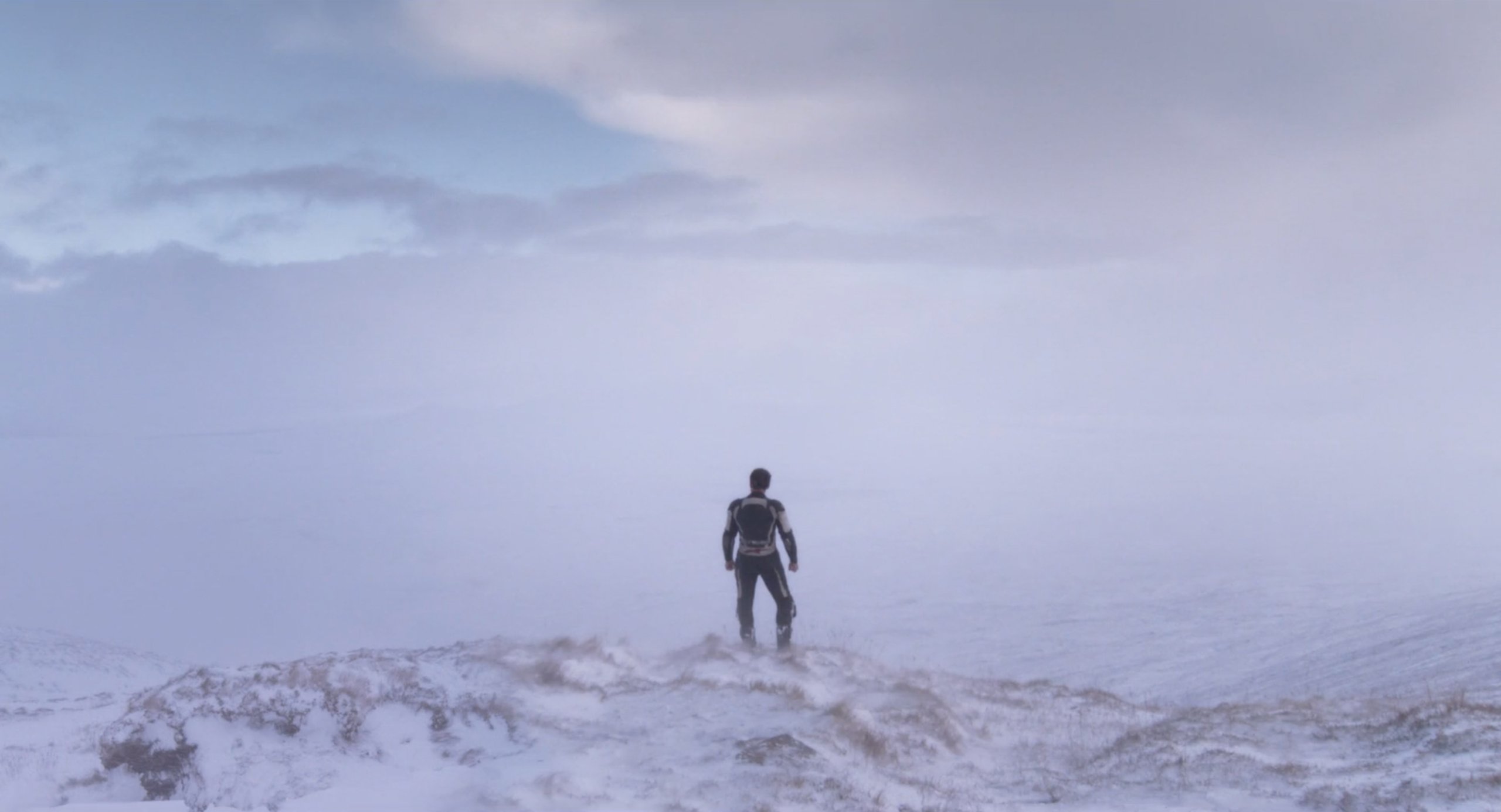
After The Woman runs away, we see there are actually multiple Motorcycle Men. Which could confirm that The Woman isn’t the only alien hunting lonely men. That there might be any number more doing the same thing, each with a Motorcycle Man managing them.
This could tie back to the ant imagery, as ants tend to have defined roles in the colony. Just like The Woman and Motorcycle Man seem to have.
What happens to the baby left on the beach?
This scene is so tragic. We see a family die. First the dog, then the wife, then the husband. All caught in a riptide. Left alone on the shore is a baby. We see that, later, the Motorcycle Man has come to clean up the scene. That’s because The Woman had abducted another man from the beach, a loner who had tried to save the drowning husband.
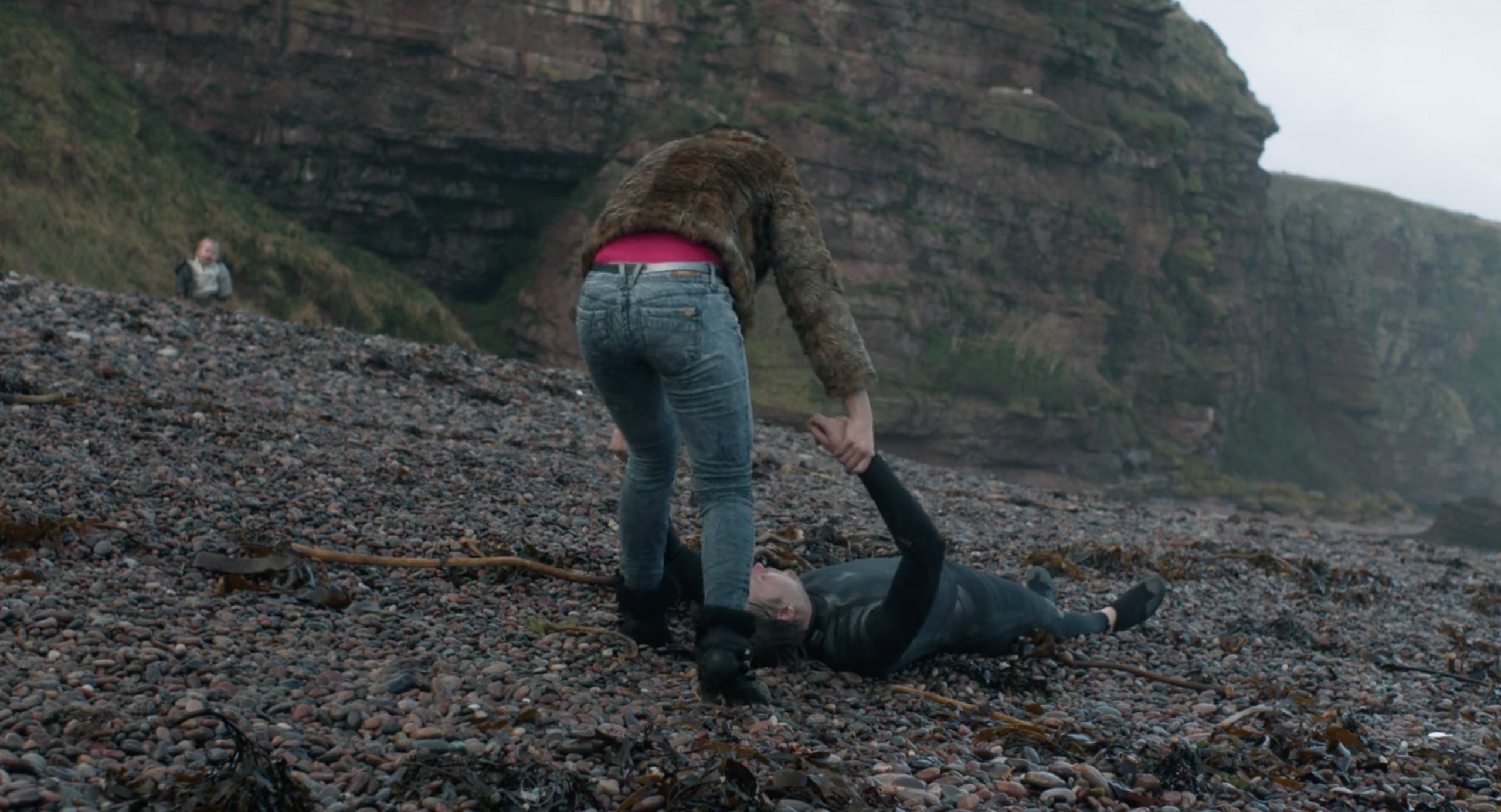
Later, we hear a radio news report say, “A man’s body has been found washed up on a beach near Arbroath. His wife and child are reported missing. The police say the body has been identified as 36-year-old Kenneth McCelland from Edinburgh. The body was found by a torust and is believed to have been in the water for some time. Mr. McClelland was married and worked as chemistry lecturer at Edinburgh University. The alarm was raised when he failed to turn up for work this morning. His car was found at the nearby Deerpark Golf Club. His wife, 32-year-old, Alison McCelland, and 18-month old son are believed to have been with him. A police and coast guard search operation involving a helicopter has been halted due to fog.”
We know the wife, Alison, had been in the water ahead of Kenneth. But that the baby had been left on shore. First, The Woman had left him there. Then the Motorcycle Man. It’s possible the Motorcycle Man “cleaned up.” Or that someone else found the child. Or something else found the child… Given how bleak the movie is, it’s probably safe to assume the worst.
What happens to the men who go into the blackness?
The Woman’s victims end up walking into a black void and disappearing beneath the surface. It seems they hang around until they’re processed. And by “processed” I mean all of their internal organs, everything that’s under the skin, is sucked out of them. Leaving just the skin. We see those internals, looking like molten lava, go sliding down a chute, into an orange space. Then light? It’s pretty confounding.
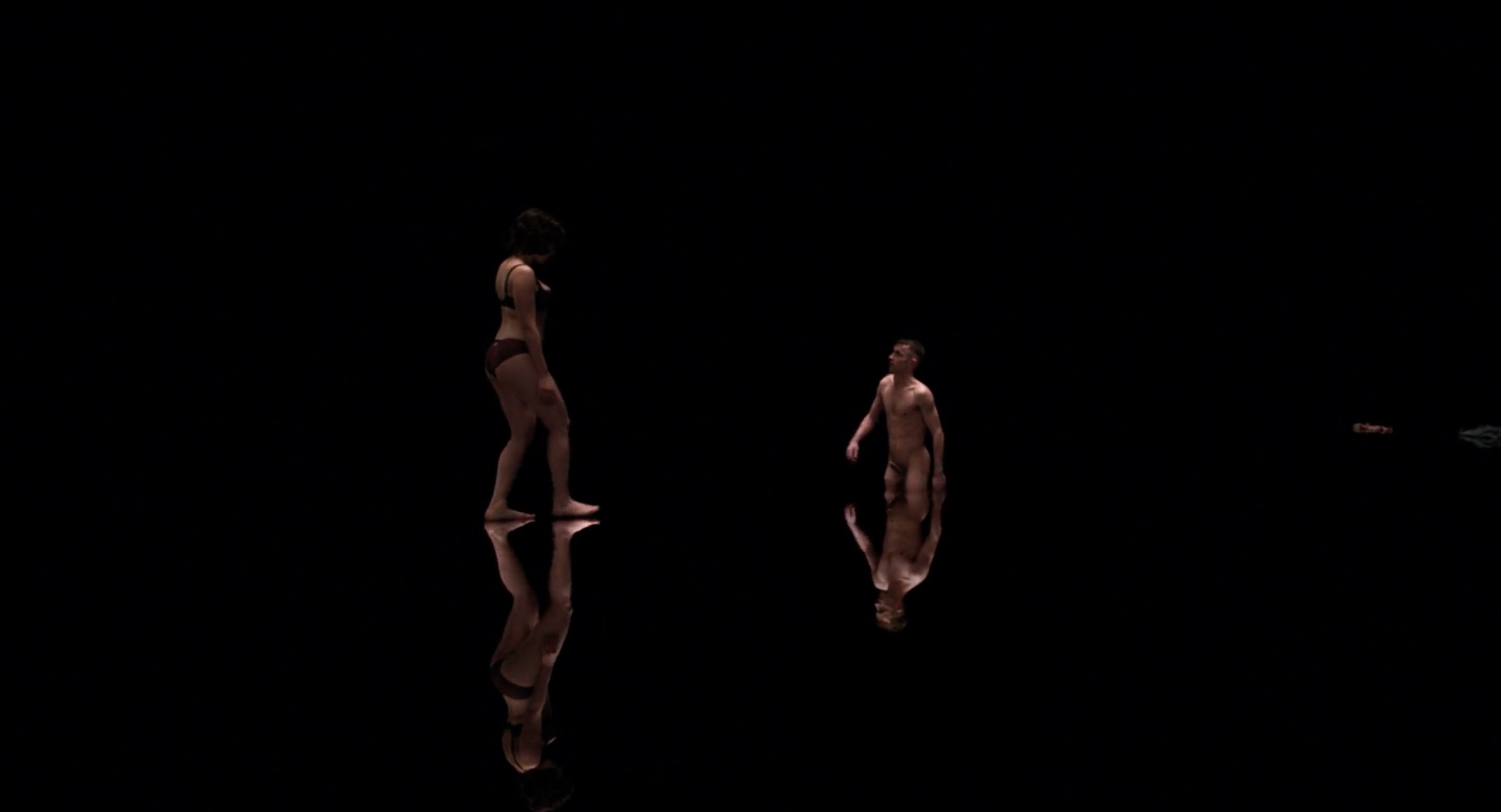
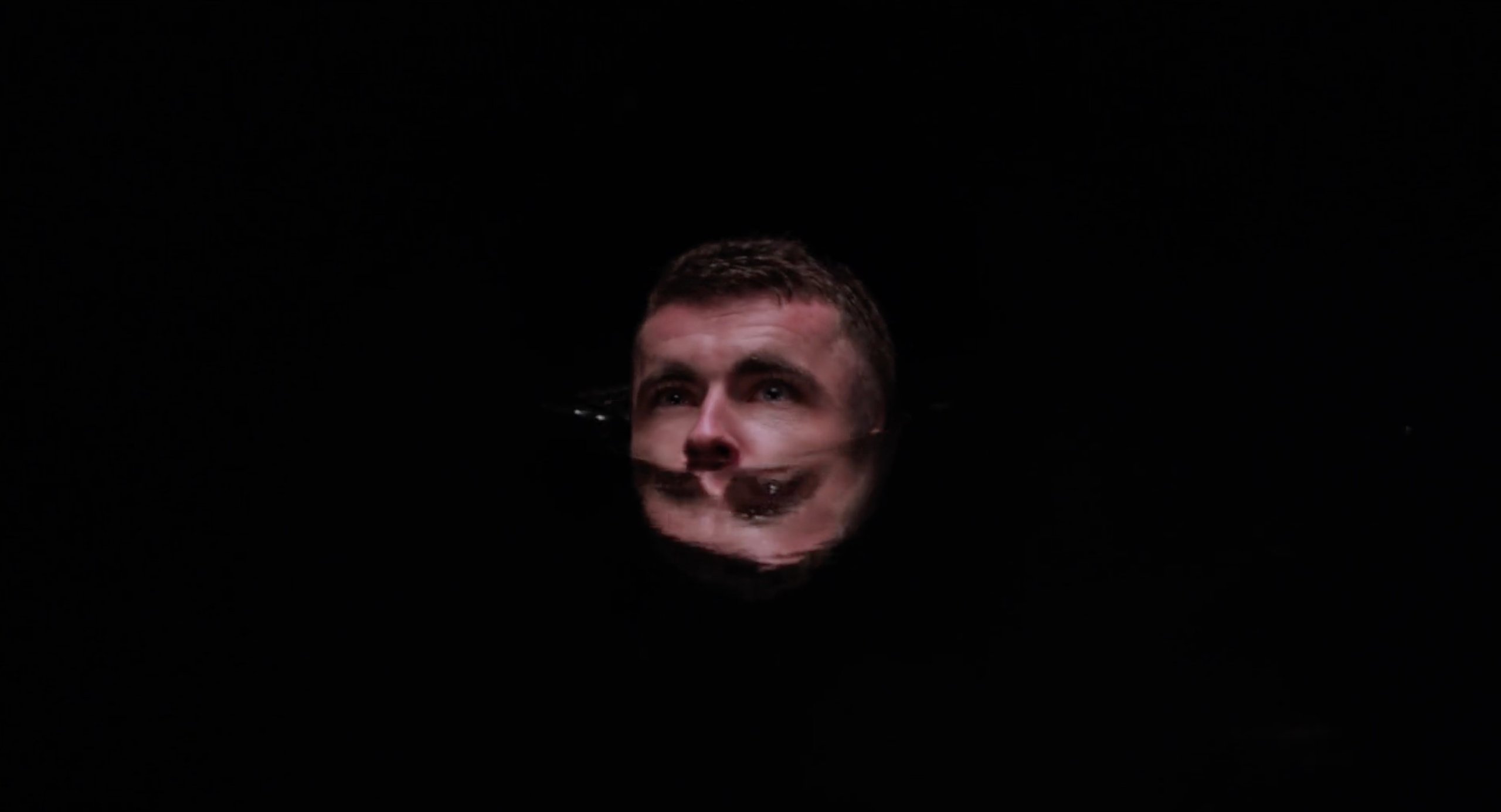
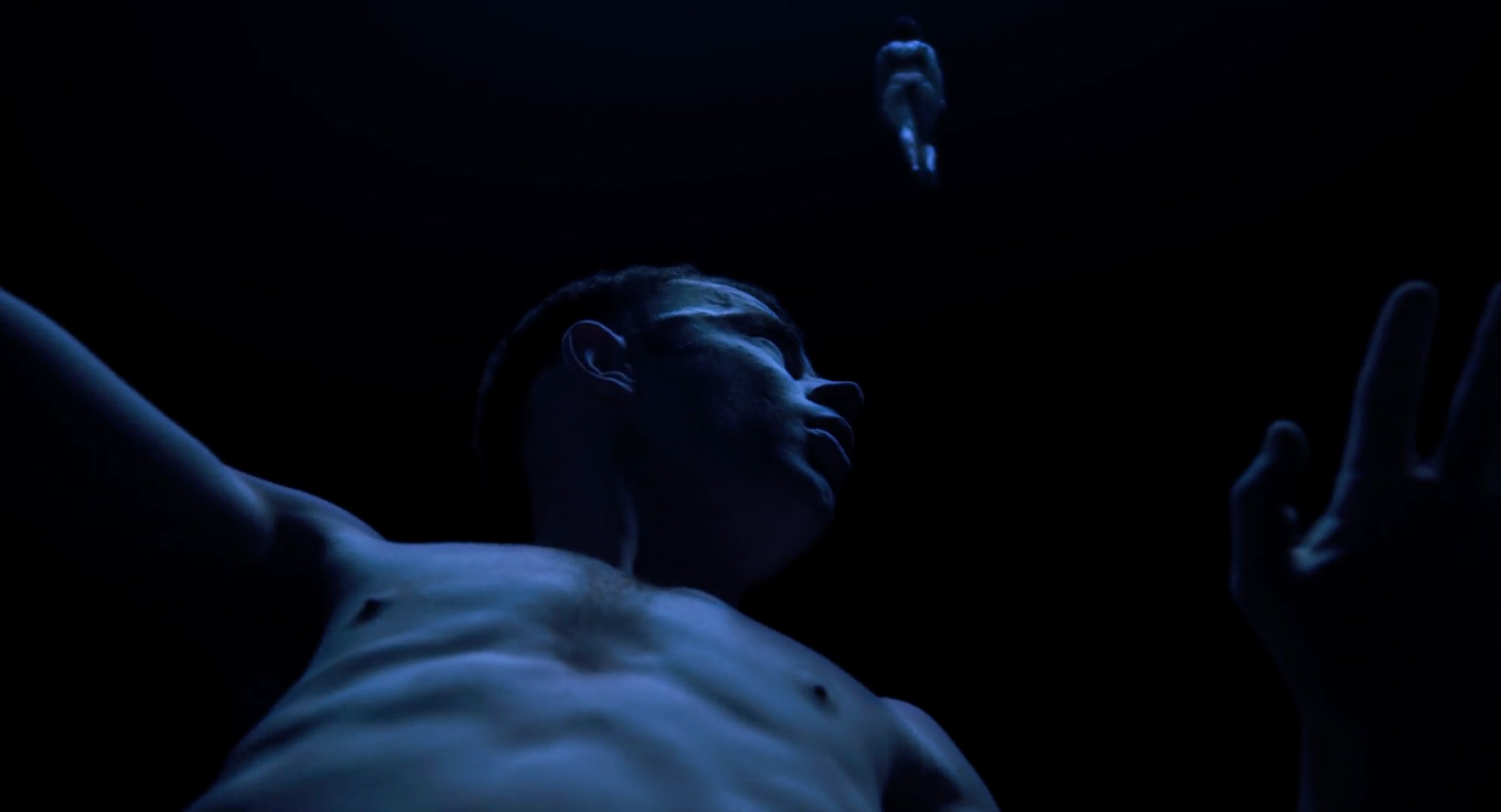
I get the idea this is them processing the human into something the aliens can then use. I don’t doubt that. But I wonder about the light. It’s similar to the light at the very beginning, when The Woman’s being built. I wonder if that somehow relates to the soul? So we have one visual of the alien soul (the blue light) then another visual of the human soul (the orange light)?
Either way, I think the light at least signifies something special about what the aliens drain from the humans. That within there’s this spark.
What is the significance of the bleeding man?
About 39 minutes into Under the Skin, The Woman waits in bumper to bumper traffic. A flower seller taps on her window and tells her a man in another car bought her a rose. She takes the rose, rolls up her window, then notices there’s blood on the wrapping. And the blood is now on her hand. She glances over to see the flower seller trying to bandage a pretty severe cut on his hand.
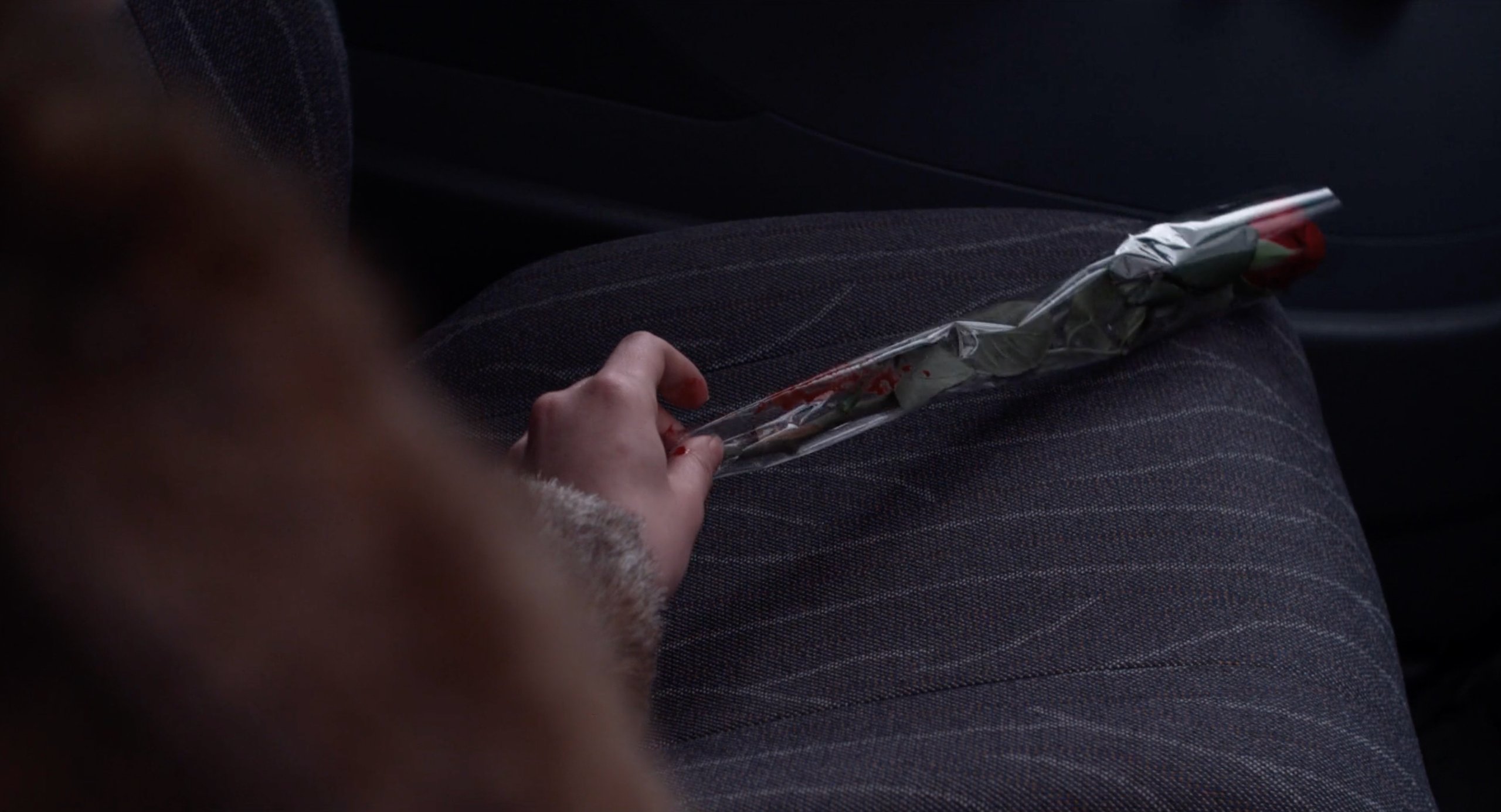
This moment is one of many that seems, by itself, kind of pointless. But it serves as a tipping point.
The giving of a rose is already a symbolic gesture. The rose is something associated with beauty. With romance. You’re telling the person you give it to that you like them. It’s kind.
Blood is something we tend to view as symbolizing both vitality and vulnerability, it’s the thing under our skin that animates us. Without it, we die.
When The Woman sees these two things together, she has this awareness of what’s under the skin of people isn’t just red liquid. It’s the intangible as well. The kindness, compassion, and desire to connect.
Which means The Woman will soon start to question what she’s doing. That she’ll become aware of the loss people feel and the consequences of her actions. A sign of this is how the rose scene transitions to the news report about the man and his family who drowned on the beach and the missing child. While The Woman might not outwardly react in the moment this report happens, it’s another turning of the screw when it comes to her awakening to humanity.
What is the significance of the Motorcycle Man inspecting The Woman?
Following the rose scene, the next man The Woman processes keeps telling her she has beautiful eyes, that there’s something special about them.
Then we go to the Motorcycle Man inspecting her, staring straight into her eye as if he’s trying to find something wrong there. What we see is mostly darkness with the hint of something reflected or seen inside the eye. Whatever it is, the Motorcycle Man seems satisfied.
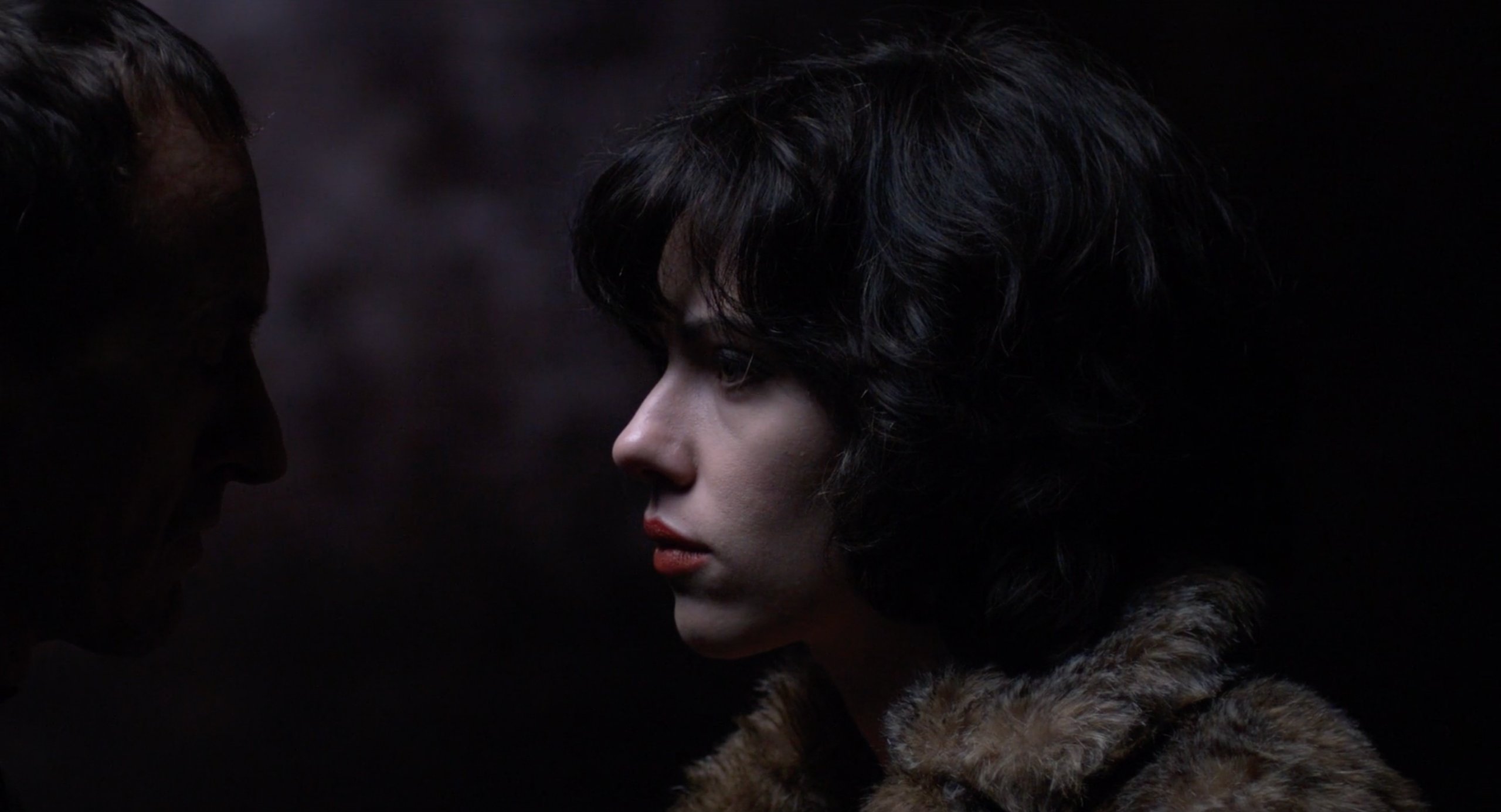
The eye is a motif, as Under the Skin opens with the creation of The Woman’s eyeball. It’s the first thing we see. Then as the movie builds to its narrative tipping point, we return to the eye.
Soon after, The Woman spends the day wondering the streets of Glasgow, observing person after person. This series of voyeuristic shots leads to an extreme close-up of The Woman’s wide eye. She seems overwhelmed or shocked. Shadow falls over the bright eye and we cut to Glasgow at night. The voyeuristic shots return, but this time they’re layered over one another. Scene after scene stacked one atop the other, chaotic but beautiful. Then The Woman’s face appears in the middle of it all, like the pupil in the middle of the iris.
This would seem to signify that the Motorcycle Man might be concerned about the integrity of The Woman as it relates to her ability to do her job. Is she still the heartless hunter they need her to be? Or is she, like the girl before her, starting to awaken?
When the inspection takes place, she’s still able to pass. But the very next scene is her crossing the verge. The Motorcycle Man is cold, calculating, terrifying. While people are lovely. Heartwarming. Their beauty and light washes over her. Which leads us to her last pick up, the disfigured man. Where she finally has a change of heart, sparring someone instead of destroying them.
Why does The Woman look into the mirror?
Knowing what we know about Scarlett’s journey in the movie, the mirror scene makes a bit more sense, right? If we’re just trying to track the bare-bones plot of the movie, then there’s no explanation or expository dialogue that tells us why Scarlett looks so troubled whenever she looks into a mirror.
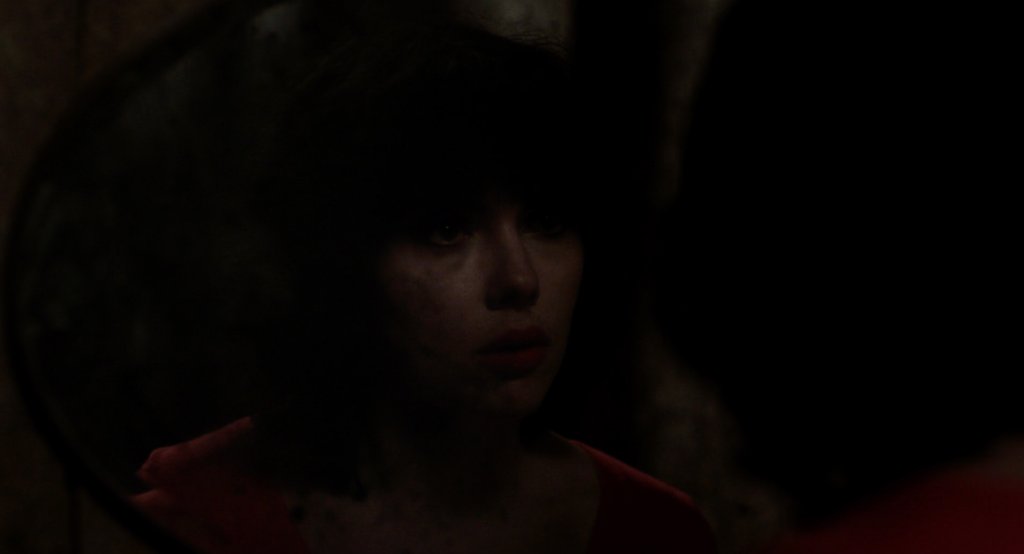
But if we think about the thematic focus on the film? And remember the title? Then we realize that Scarlett isn’t just looking at her own image in that mirror. She’s looking through the skin she’s wearing—the skin that was designed for her—at her true self. She’s discovering all of the emotional conflict that’s been brewing inside of her during her time on Earth.
This climactic moment comers after she becomes more aware of humanity’s beauty after interacting with the disfigured man. She connects with his otherness, and discovers that she doesn’t like that she’s been manufactured to hunt down these men. She doesn’t want to be killing these men. She sees beauty in the world and would much rather connect with humans.
Why does The Woman save the disfigured man?
The Woman knows she’s not human. That she is, under her human skin, an alien who looks nothing like Scarlett Johannson. But to all the men she’s met, she’s this beautiful woman. Over and over again, people compliment her and validate her looks. And for the most part, everyone she meets is your standard, average looking person.
Then she meets the disfigured man (Adam Pearson). Hiding himself under a hood, it seems he’s embarrassed by his appearance. Probably from a lifetime of people treating him differently because his neurofibromatosis has manifested several (non-cancerous) tumors that have altered the size and shape of his head.
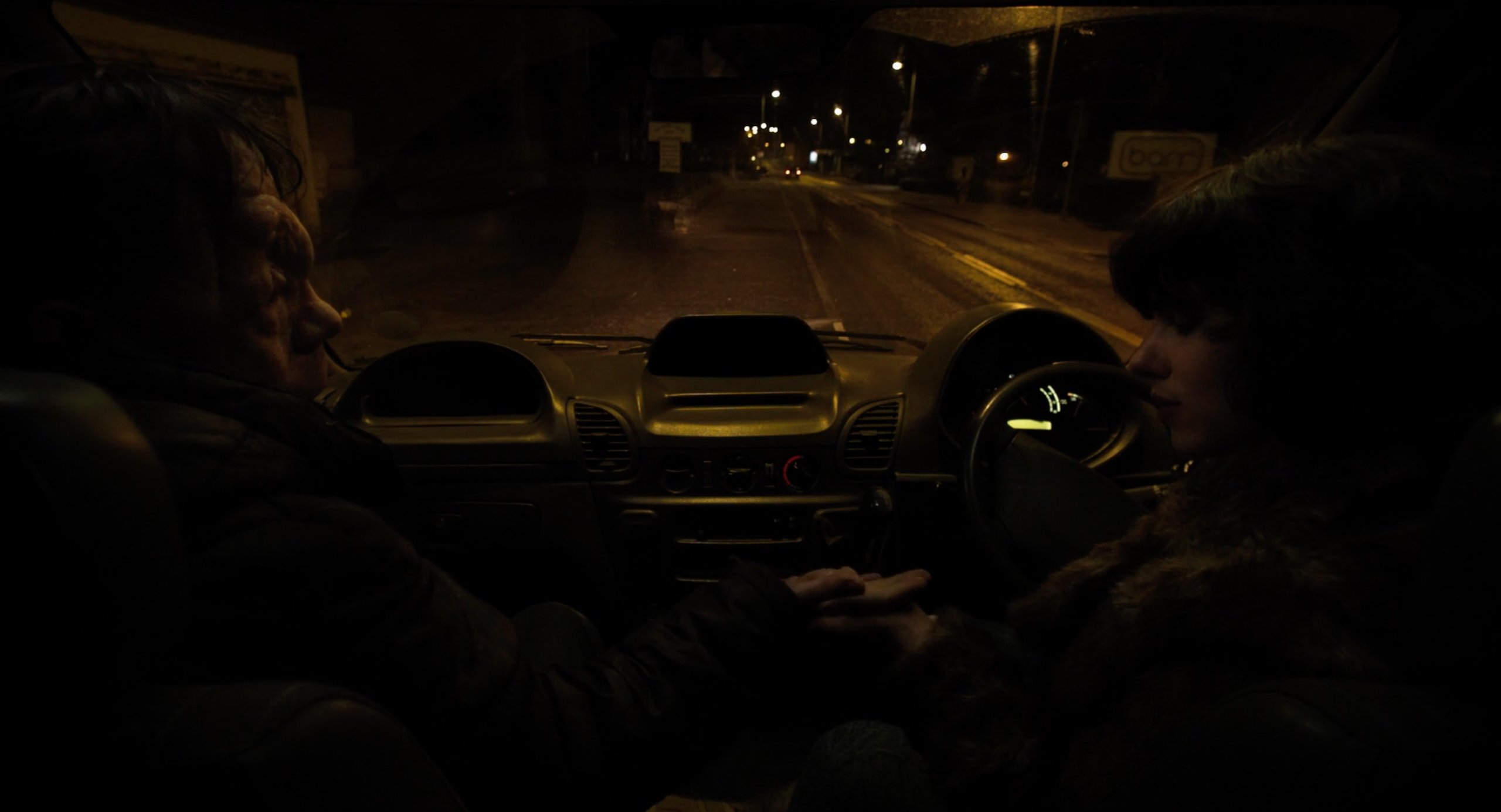
The Woman proceeds with the disfigured man the same way she would anyone else. But he makes her aware of her own true appearance. That what’s under her skin isn’t something humans would find beautiful. In that way, she feels a connection to this man as he embodies an aspect of her that no one else has.
This awareness of her true self is why when they enter the house we cut to a shot of the ebon mannequin. On first viewing, we don’t know this is what’s beneath her skin. It’s seemingly completely random. Especially when the next cut is of Scarlett and the man. Where did this figure come from? Where did it go? Why did we see it?
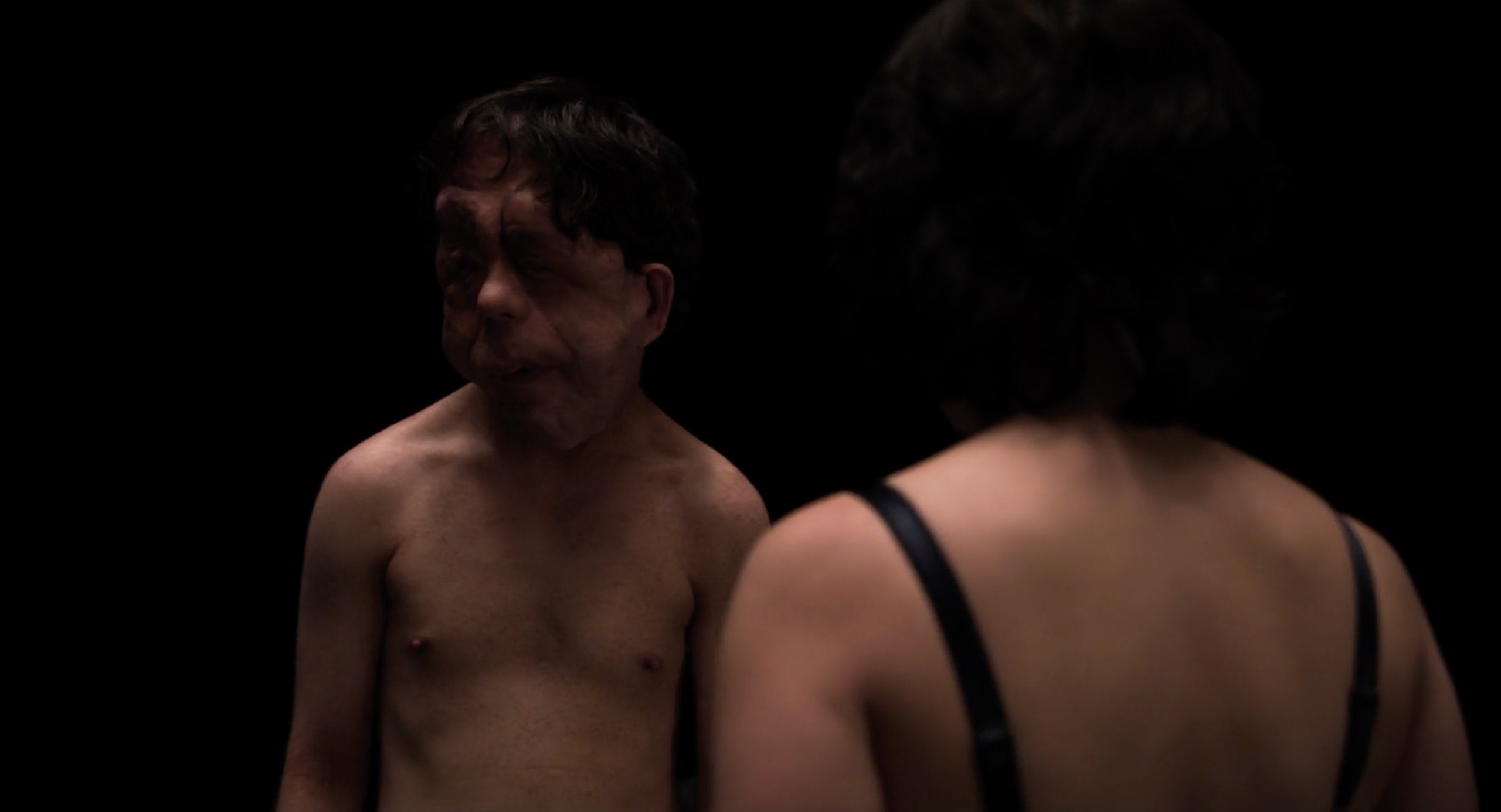
There’s a slight hint after the man sinks into the blackness and The Woman is alone. We get another shot of the ant-like mannequin form then a overlaid shot of The Woman and the mannequin. So while we don’t see her as that thing, we get the sense she’s seeing herself as that thing. Which is why it’s important when she exits the room and sees herself in the mirror.
She’s super aware that she’s this featureless mannequin. But finally seeing herself as this unique, beautiful human. As an alien, she’s nothing. As a person, she’s herself.
Then we get the fly trapped against glass. Which probably reminds her of the men trapped in the dark liquid. Feeling more human than ever, and feeling particularly connected to the disfigured man, The Woman saves him.
Except the Motorcycle Man ends up finding the disfigured man and killing him.
What happens when The Woman tries to eat cake?
After The Woman flees her alien life, she ends up a little lost in Scotland. At a random restaurant, she orders a slice of cake. There’s a sense of anticipation and excitement. She’s doing something that’s purely for joy and her choice rather than part of her human hunting gig. We even get the close of her putting the fork in her mouth and taking in the cake. It feels almost like a holy act. Then we cut to her throwing the cake up.
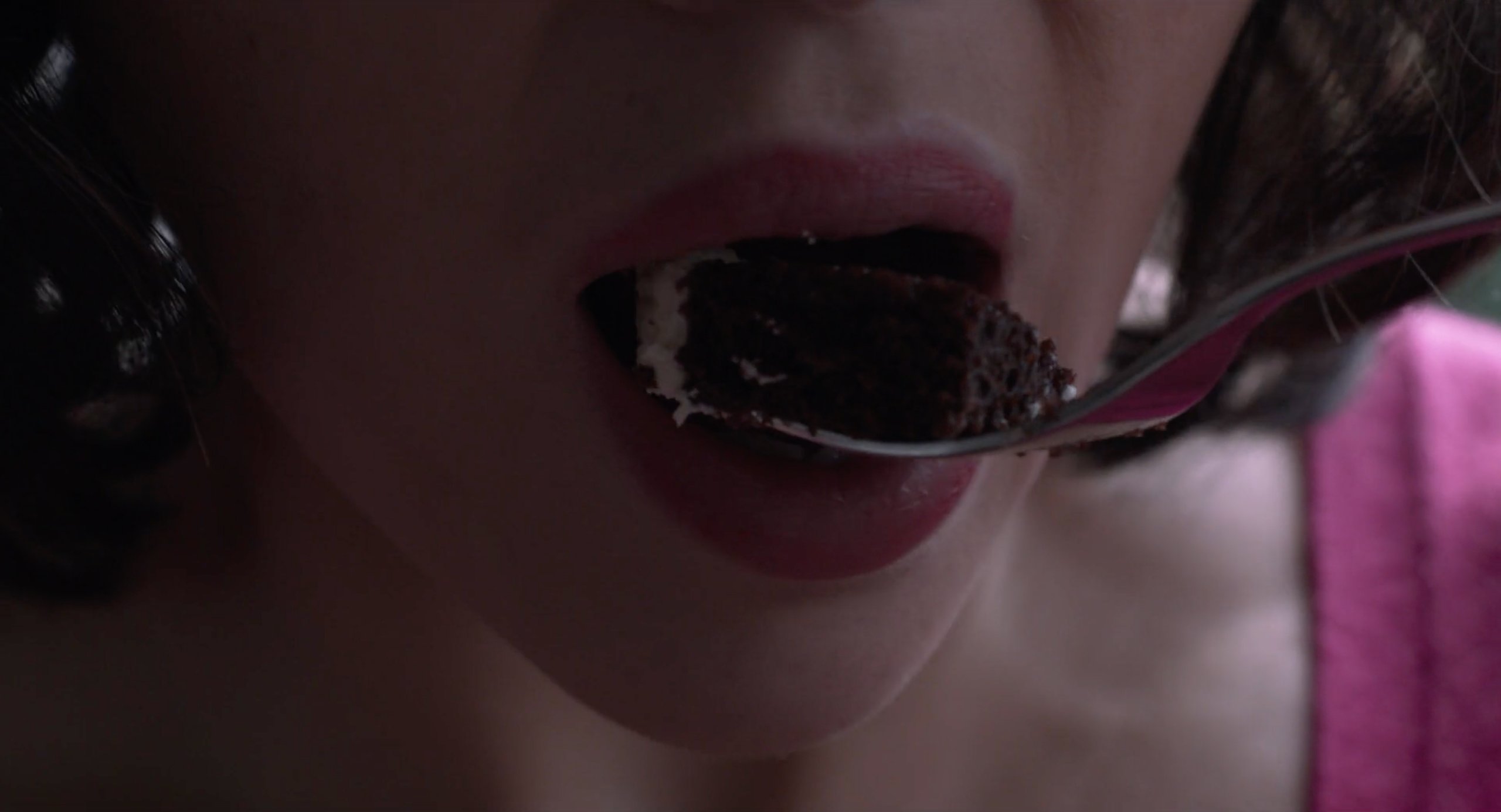
The reason she can’t eat the cake is because she’s not a functioning person. She looks like one. But (and I’ll keep using this phrase) under the skin she is not. It’s the same reason she can’t have sex.
This becomes even more clear when we see The Woman’s true form. Human shape, but not human function. We don’t even know if her real mouth opens or just her fake mouth.
The cake scene foreshadows the failed sex scene. Both of which undermine The Woman’s efforts at trying to live a human life and remind her of her non-human origin.
The Woman in the trees
When The Woman goes to sleep in the hiker cabin, we cut to a wide shot of the forest. A ton of conifer trees fill the screen. It’s kind of peaceful. Then The Woman fades into the middle of the trees. She’s curled up, asleep. It looks like she’s a giant phantom in the forest. It’s weird, but still peaceful. The trees sway. She’s completely tranquil. You could describe her as embodying the idea of “mother nature.” Or a baby in the womb. Or that this represents a connection between her and the Earth.
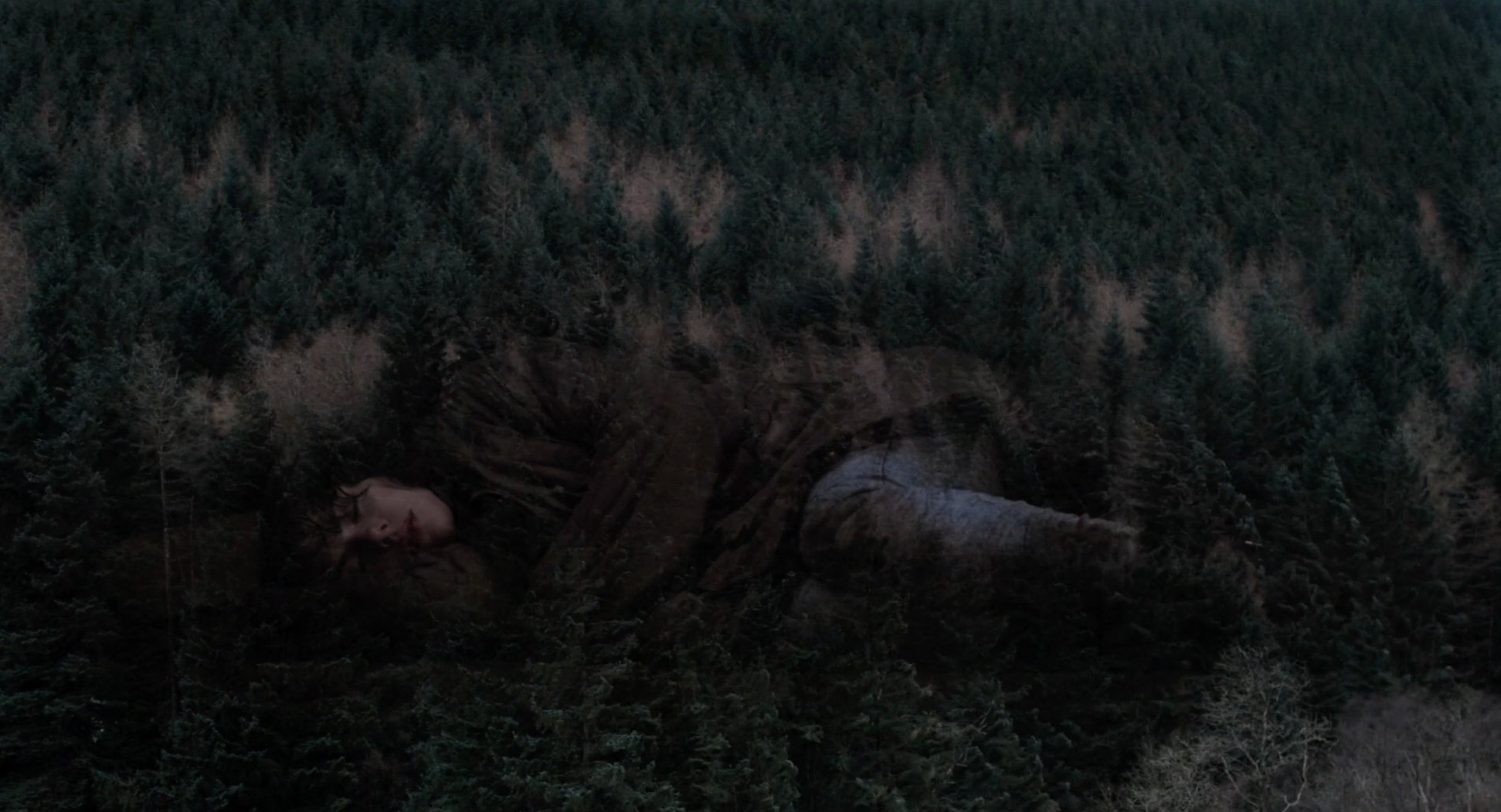
This isn’t the first time Under the Skin has superimposed The Woman into a shot. We talked about it in the section about the Motorcycle Man inspecting The Woman. How The Woman went walking the streets of Glasnow, admiring all the people. This montage of various people turns into the many different shots stacked on top of each other, creating a collage effect. Then The Woman appears superimposed in the middle of this.
In both moments, The Woman is in the middle of the screen. And each time there’s an ethereal quality to the visual. It feels out of body, more spiritual than grounded in physical reality like the rest of the movie. Almost as if the barriers between what’s on screen have collapsed, symbolizing a connection forming between The Woman and people, then The Woman and nature.
I do think the purpose of these shots is to imply connection. And that they kind of tie together with the two shots of bright lights we see. The first being the blue light during The Woman’s creation and the second being the orange light after the processing of one of the male victims. We talked about how those lights may represent something like the soul. These superimposed shots would also play into this spirituality that seems to be (to me at least) a kind of ever-present subtext of Under the Skin.
The big confirmation of this spirituality is, I think, the film’s final shot.
Why is The Woman lit on fire?
When the logger attacks The Woman, the struggle tears her skin suit, revealing the alien form beneath. The freaked out logger responds in cruel fashion and sets The Woman on fire, killing what he doesn’t understand. Her last effort is to try and run to safety. Except the fire wins. We see her collapse in a clearing and continue to burn.

We cut, briefly, to the Motorcycle Man in the middle of nowhere, on what looks to be the top of a cliff. Snow and clouds obscure the distance but you can see a large expanse of empty land, a field that’s dead in the winter, covered in snow. The whole scene is very bright. Except for the Motorcycle Man, clothed as he is in his dark motorcycle clothes. He looks out of place, sticking out in the middle of all that nature.
Then we return to The Woman. Her body is gone. Only ash, char and ember remain. A grey smoke climbs into the sky as snow falls all around. We cut to the smoke and the camera tilts to follow its billowing into the sky. The cloud loses density until it’s dispersed completely. All that remains is the sky and the snow.
What jumps out to me is the dichotomy of those scenes. The Motorcycle Man maintains his physical form. The Woman loses hers. The Motorcycle Man doesn’t fit the landscape. The Woman joins the landscape.
The story had already been about The Woman abandoning her role in the alien world in order to become part of the human world. Even though she dies, there’s an argument to be made that she’s simply transcended her physical form and become part of the Earth.
This is why I think Glazer included the various moments that feel more spiritual in nature. The two moments of bright light that seem to imply a soul or spark of life, and the two moments of superimposing The Woman into civilization then into nature. The later moments imply a spiritual connection while the former moments imply the existence of an actual spirit. When you combine those things, you come away with the idea that death isn’t a void. That maybe there’s something beyond the physical. That would make The Woman’s death less of a tragedy and more of a somber victory.
While Glazer never tried to stay true to the original novel, this is in line with how the novel ends. The Woman gets into an unexpected car accident and is mortally wounded. She realizes it’s her duty to detonate this device that will incinerate all evidence of herself and the alien technology in the car. Before triggering this final blast, we read this:
The aviir would blow her car, herself, and a generous scoop of earth into the smallest conceivable particles. The explosion would leave a crater in the ground as big and deep as if a meteorite had fallen there.
And she? Where would she go?
The atoms that had been herself would mingle with the oxygen and nitrogen in the air. Instead of ending up buried in the ground, she would become part of the sky: that was the way to look at it. Her invisible remains would combine, over time, with all the wonders under the sun. When it snowed, she would be part of it, falling softly to earth, rising up again with the snow’s evaporation. When it rained, she would be there in the spectral arch that spanned from firth to ground. She would help to wreathe the fields in mists, and yet would always be transparent to the stars. She would live forever. All it took was the courage to press one button, and the faith that the connection had not been broken.
She reached forward a trembling hand.
‘Here I come,’ she said.
Glazer’s interpretation of that conclusion is far more grim than hopeful. The Woman isn’t done in by a faulty car part and a patch of ice. It’s human malevolence. There isn’t a sense of peace and even triumph from her inner dialogue. There’s only a desperate sprint to leave behind the flames that cling to her.
But despite Glazer’s bleakness, I think some of that hopeful beauty comes through. That there’s more to us living things than just skin and bone.

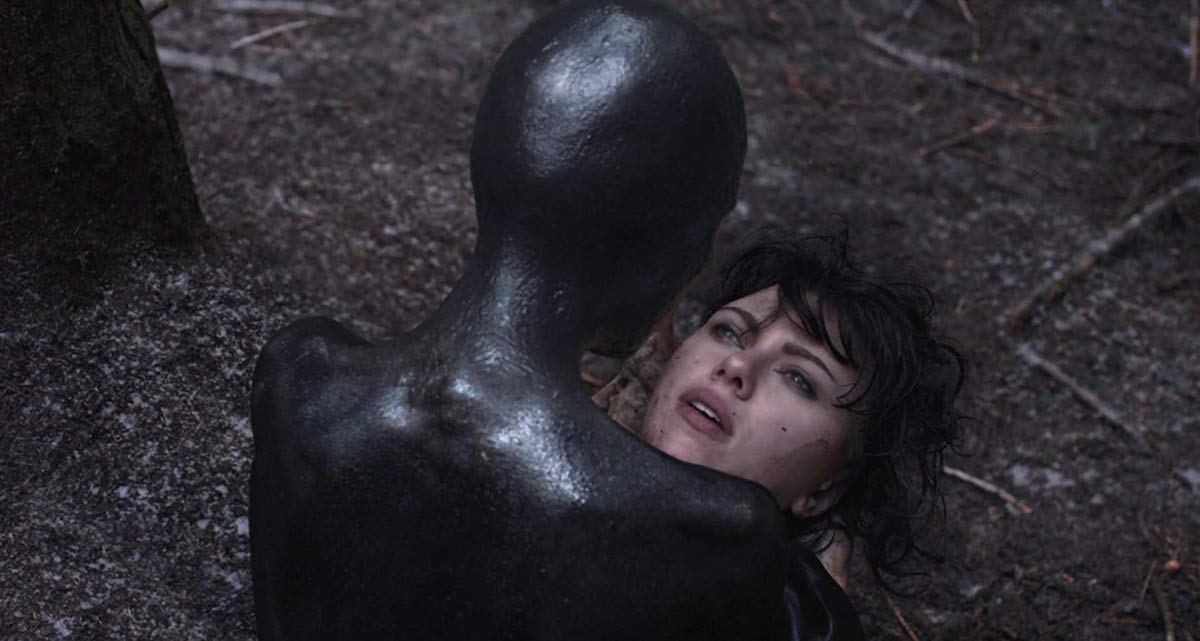
After I saw the movie, I knew I will look for some explanations.
But this critique was much more than I expected, great job and thanks! 🙂
Thank you very much!
Glazer said in an interview he never read the book so all this explanation about “his interpretation” is useless
In an interview with RogerEbert.com, Glazer confirmed that he read the book once. “What I think what is quite interesting in this case is that I have only read the book once”
So the interpretation is not useless.
I enjoyed your analysis and looked for it because much of the movie eluded me. My thought was the purpose of the black goo was to remove the skin for use by another alien. Nobody mentioned the fact that when the two men were in the goo the first man was bloated and much larger. Then he popped and his skin fell off. I think they kept the original human face and eyes and parts of the brain to form a perfect human mask. The human brain alien brain hybrid was why they start developing empathy. The black mannequin in the room with the NF guy was an alien waiting for his new skin. The reason The Woman undressed the alien in the beginning was an indirect way of representing her removing her skin to put it on herself. The director just didn’t want to give too much away too early.
Also I didn’t catch any he meat part – How to serve man. I thought it was the aliens way of disguising themselves to learn what they can about humans before the hive conquered them a la Enders Game.
I disagree with your thought that the first few men she met were good. Except for the guy in the tent they only wanted to hook up. This was a flip on the serial killer killing prostitutes (eg, Long Island Killer) by a killer prostitute killing jerks. On this sense she was an antihero and not a villain from the beginning.
Arguments against some of my ideas are why she was assembled on the ride to the planet? Maybe she wasn’t fully assembled until she landed and they skipped that part to build suspense. Also, why would she lure a deformed man if she only wanted to use him as a meat suit? Maybe her alien mind saw him as beautiful- what is a beautiful ant?
Great write up. Very useful, thanks.
Happen to hear it!
The scene where she’s looking at her human face, which was still emoting, pretty much confirms the predecessor theory, mirroring the expression and emotional tear rolling down the cheek. Creepy good movie.
Right?
One thing that is missing in your analysis that I think is an oversight that should never be ignored about this film is: the eyes being windows to the souls. They are instrumental in this story. That along with matters of the soul and karma. Literally the first picture of the woman we see is that of her eyes. This is also an obvious commentary on women in sex work.
Look at the end of the film to better explain my thoughts. After seemingly fighting for her life sprinting in a marathon of self preservation against her persuer. She is twarted and overpowered. She looked up to the heavens with a sort of incredulity or reservation of her fate. Apathy overtook her gaze as she looked up in detached thought. Perhaps she is thinking of her home world. Perhaps she is thinking of her insignificance in the grand scheme of things much like the ant she regarded or the other woman she murdered to “take her place” at beginning of the film.
She seemed to empathize and mirror the ant more than she ever equated humans to them (though both can be true at once thematically). She sees herself to be expendable. Her entire existence is to be a glorified extraterrestrial sex worker. One who has no agency until she starts to assimilate with the humans.
Back to the end of the story:
The r**ist human man tears her skin layer off and backs away at the unsightly visage of her true form. A black almost antlike exoskeleton of an outer exterior under her husk. I don’t think this was by accident. It is the same texture and tone of an ant. He instantly sees her as a freak and violently pours gasoline and ignites it. This parallels real life assaults toward fems (specifically trans, passing racial minorities and overall the queer and the popular “gay panic m*rder” defenses from the 90s) especially in sex work.
She then begins walking away similarly to her more detached way of handling the hoodlums from earlier. The way the shot is framed mirrored her seductive way she used to lure the men into her honey trap. Only now she is more like a wounded animal sloshing about rather than the apex predator like from before. She seemed to go through the motions of her empty existence on earth when she identified more as an alien as she pushed forward.
Then she removed her mask and revealed her true form. She crouched down and removed her second skin and she looked deep into her own human forms eyes. It seems to again mirror earlier in the film when she seemingly pondered who she truly was, only in the mirror that time. Is she an evil, souless -she has no eyes in her alien form so her identity is without a soul (like ants). Is she a temptress forced into sexual slavery? Is she apart of the hivemind of her patriarchal world? Or is she a woman with her own individual soul that is tailored to her sins and atonements? Can she atone for her sins?
It’s like she understands she deserved death karmically that’s why it called back to her reevaluation of herself earlier in the film when she let the poor incel man go (the first time she seemingly experienced guilt for her heralding mass murders for her alien brethren). In fact when she first meets him she tells him he has beautiful eyes. This just hammers home the idea of purity in the soul being convied through the eyes. She is looking into his essence and by just his body unlike with the other men she violated. One of the men even comments before being abducted that there was something “off” about her eyes foreshadowing this being an underlying theme of the film. It might even be the biggest connection of the entire film. Especially in a film that seems like things just happen this seems to be concerted attempt to bring all the stories together.
This was her way of asking for salvation of her soul before she burned into the atmosphere. That’s why the ending being so spiritual looking is very telling as to why I think it works as an explanation. The woman eyes were how the film begins and ends.
Anyway, that was just my stream of consciousness rambling of thoughts. Great work on your analysis of the film. Helped me contextualize my thoughts on it so much more. I hope my thoughts help you do the same.
Hey James! I think that reading is very fair. Whether it was the “intended” one or not, it’s a very valid frame through which to discuss Under the Skin. And I think you’re right about eyes being a more consistent theme than we maybe addressed. I’m sure this is going to be a comment that people come across and really appreciate! Thanks for leaving it.
Great article/analysis, but it might have been slightly differently informed if you knew (and if you believe him when he says this) that Glazer never read the novel.
According to an article on another site (Collider): “Glazer also revealed that he hadn’t read the original novel of the same name by Michel Faber, so the source material is unlikely to clear anything up.”
So it appears (again, if you trust Glazer) that he knew the general idea of the story but took it in his own direction. And considering how many years he developed this before filming it, it makes sense that he would have carried it far from the source material.
Definitely. When I was looking at the source material, it felt unimportant lol. I mean, it does serve as a foil and can give us clues. But it didn’t feel necessary in the way that reading White Noise helps you understand the movie White Noise. But I don’t think knowing that Glazer never read the novel would change the overall points we make in the explanation. It is good to know, though! Appreciate the insight.
“IT’S A TRAP!”
-Admiral Ackbar
How alienating it is to be human.
Right?
Hi, thanks for an interesting interpretation of the movie!!
I have some thoughts I’d like to share. Apologies if I don’t present them in the most organized fashion. Anyways, I’m interested in who the aliens are and how the movie may give us hints.
One thing at the very start is the sequence that ends with the eye. I see this as possibly a machine. It’s pretty clear there is a donut shape with another shape moving into it. Then we see a circular shape being very clearly filled up with some kind of black fluid. This got me thinking that perhaps the aliens are using some technology to fill a human’s skin with black fluid and the fluid stabilized and is inhabited or infused with an alien conscientiousness which is then given hive directives (a job to do) and some education/training. So I feel like the aliens basically pour their clones into the human skins.
Evidence for liquid-clones:
• the alien version of Scarlett is virtually identical to the human Scarlett and the odds of finding humans identical to aliens is farfetched
• i feel it would be too farfetched that the aliens would be so similar to humans
• another interesting thing is that i think that in this process the aliens are tied to the skins… even when the skins are torn or removed… which would explain the human Scarlett still blinking and staring back at the alien with a confused look. That is because the clone-alien has never seen what she “supposedly” looks like. Also, her black form possesses some feeling which is why she runs when the gas is dumped on her back. But she can’t fight back because she has no idea what fighting back even is. She is simply a worker-clone honeypot.
I think the girl at the beginning was a previous worker-clone who was discovered and paralyzed by a soldier. That would explain her tear and emotion shown. So becoming infected with human emotions is forbidden and that is what the worker was looking for in Scarlett-clones eyes. I don’t think there was any physical thing in her eye, he was just looking for a hint of emotion which is why the Scarlett character’s eyes were so dead and completely lifeless.
This leads me to my other possibility.
I think the aliens could be an insect race.
Evidence for this is:
• movie strongly suggests hive mentality
• ant moment becomes more fascinating
• the alien’s true form is SO repulsive that creating liquid-clone technology is easier then anything else
• CHECK OUT the movie poster. Look at the large landscape version with all the stars. To the left of Scarlett’s face the stars pretty clearly form the face, and possibly some body below the face, of an ant-like insect about the same size as Scarlett’s face. I think it’s fascinating. Here’s a link if it works.
https://www.heyuguys.com/under-the-skin-poster/
Anyway, I think the point could be a number of things.
Perhaps it’s about humanity where some are good and some are bad.
Perhaps it’s about even insects can develop emotions… but the hive will resist it
Or perhaps it’s a warning that humans are arrogant and could actually be used as food by a race of “supposedly” inferior insects.
Cheers 😉
Wonderful analysis and insight. I liked the book a lot but loved the movie. One key thing missing from the book is the class and political issues that frame the novel. Isserley in the book, instead of being an oily black figure is said to resemble a dog in her original form. Surgery transforms her to human form.
She did this to be rescued from the dark poverty of living underground, unlike the wealthy who live above ground. She is angry at this and is horrified when she sees the tongue of a human captive cut out. This, and the words of Amlis who believes humans (vodsel) should not be eaten, are key to her turn around. All of this is missing from the film that strives to be more visual than verbal. Yet it is done so well it creates a very moving and unsettling film. Scarlett Johansson is simply magnificent. i’d like to add a poem I wrote about the movie today : Scarlett Johansson in Under The Skin
For Scarlett
An enticing role where she does entice
having come from the stars to murder men
picked up on highways or deserted streets.
Lapping dogs these men following a trail
of Scarlett’s strewn clothes to fall into oily
dark quicksand capture then force fed &
sold as meat. Scarlet slays many in her abattoir
until a change of heart this alien may or
may not have, leads her to abort her mission.
She explores sex with her foreign parts
its taint of chaos until a r**ist attack peels
away the false flawless skin covering a dying
wraith. Brutally burning her alive to reveal
finally how truly alien it is to be human. By Rp Verlaine
Thanks for the insight on the novel, RP! And the poem is also very nice. I especially like the last two lines!
I’m sorry, but any movie that requires this much analysis to understand even dubitably belies the filmmaker’s lack of exposition. It’s poor storytelling, full stop. Watching this movie left me poorer than when I’d begun. I want my two hours back. This is the worst movie I’ve seen since Lobster, an equally pointless and dystopian waste of time. The only utility the movie presents is to teach one to avoid Glazer’s movies in the future.
Honestly, I first saw it at the Toronto Film Festival when it premiered and I hated it. It blew my mind so many people loved it. It took me until Travis and I wrote this article to actually re-watch it and I found myself liking it a lot more. Especially when I understood more of what it was doing and how humanistic it was. So I get where you’re coming from. But I also completely disagree that works that require this much analysis are problematic. They’re not for everyone but that doesn’t mean they’re bad. The story here is quite clear and follows all the core beats you’d expect. Same with something like 2001: a Space Odyssey. Lobster is problematic because it’s derivative of 1984 but the storytelling is completely fine. It seems to me like movies that lean more thematic and philosophical aren’t quite your cup of tea. I’d be curious what you thought of various movies like Saving Private Ryan vs. Full Metal Jacket vs. 1917 vs. Dunkirk vs. Apocalypse Now.
The point of all art is to edify and inform in some way. (I know that this is considered quaint or even archaic, but I believe it to be so.) Art says things about life that other mediums simply cannot. For example, science can tell us *how* to build a bomb but not whether we *should* build a bomb. Art is vital to that dialog. Movies like Full Metal Jacket and Apocalypse Now inform that dialog, even if one disagrees with the filmmaker’s intent or point of view. My main frustration with Under the Skin is that I am unable to apprehend any point to the movie or even understand its main characters. The motorcycle men remain enigmatic and their interpretation speculative. The black goo remains mysterious, and even the need for the copious volumes of the stuff appears absurd. Had I read the novel, I may have been better informed. But films must stand on their own.
So what is the point of the film? That we are not so unlike malevolent aliens in the way that we treat other species? If so, a bit more exposition would have been productive. Critics may love this kind of inchoate stuff because it gives them an opportunity to bloviate and pour their vain imagination into a film’s void. But I find it mediocre and insipid. This is all the more tragic considering the filmmaker’s excellence in other moviemaking essentials such as production, distribution, marketing, and the like. I really feel that Under the Skin missed an opportunity to have been great.
I agree with everything you said about art and how art informs! So with Under the Skin. Let’s see if this works as an example. Imagine a story about a single parent grieving the death of their child, feeling completely depressed and withdrawing from the world, before finding some closure and moving on with their life. You can tell that story in a very realistic manner. Parent has a job, friends, and we see them trying to be normal but they’re struggling. Eventually they’re completely checked out. By the 20 minute mark, they’ve locked themselves in their home and don’t answer calls and don’t go out, are starving, barely sleeping, really low. But something happens and they turn a corner. The pictures and videos no longer make them cry but laugh. They slowly rediscover what it means to live and how they’re honoring the memory of their child. And we see them return to their job. Their friends. Etc.
Now that same story was told in the movie Gravity. But instead of it being so realistic, it was told in Sandra Bullock being lost in space and having to make her way back to Earth. The journey is symbolic for grief. A similar thing happens in the movie The Babadook. The monster in that movie represents the grief that haunts this family that lost the husband/father in a car crash. It torments the mother and son, divides them, until they’re able to work through their grief. We call this technique defamiliarization and it’s at the core of a lot of sci-fi movies.
For Under the Skin, the “should we build a bomb” of it all is about how people treat people, and self worth, and male-female dynamics. In short, it’s an exploration on humanity. Which is why you have scenes like on the beach. When the guy is drowning and the couple try to save him and drown. You have people who risked everything to help someone else. And their baby is left behind, suddenly an orphan. And ScarJo is there. She could help the baby. She essentially has the power to decide if it survives or not. And she chooses to do nothing because she’s not a human who cares about humans. There’s a really deep dive into the human desire to connect, to trust, to be vulnerable. And we see ScarJo’s character fake those emotions for the first half of the movie. But her encounters with these lonely men actually convince her what she’s doing is wrong. And she goes off to find herself. To try and be human. And discover warmth and joy and what it means to live rather than serve. You see the way all these people try and help her. Only for this last dude to take advantage of her. And, when he discovers she’s an “other”, set her on fire.
I think reading it as literal as “we are not so unlike malevolent aliens in the way that we treat other species” is being too literal. The aliens are more representative of indifference, callousness, seeing others in a dehumanized way rather than as people. With the movie saying that when you see people, when you truly see them, there’s something beautiful in how we treat one another. But when we see others as others…then we’re capable of awful things. So the how ends up being a reminder of how to look at the world. With compassion, with sensitivity, with patience. But also with wariness because the people who see you as an “other” exist. And if you encounter one…look out. Very bleak and beautiful informing.
I’m not saying that it makes for a movie you have to love or suddenly admire. It might just be told in a way that doesn’t resonate with you at all. But I hope that maybe you can see that there is a depth and meaning to the film rather than it being pointless. It has a point. It just might be a little too exposition-less for your tastes. Which is completely okay! And, I get it. As I said, I hated this movie for years. Oh, another movie like my Gravity example is A Dark Song, if you ever want to check that out.
Wow if I didn’t read this the movie was so confusing and made no sense to me only bits I understood but thank you for explaining it❤️
I’m glad we could help!
Great article. I laughed out loud at “(and I’ll keep using this phrase)”.
Appreciate it, Jay!